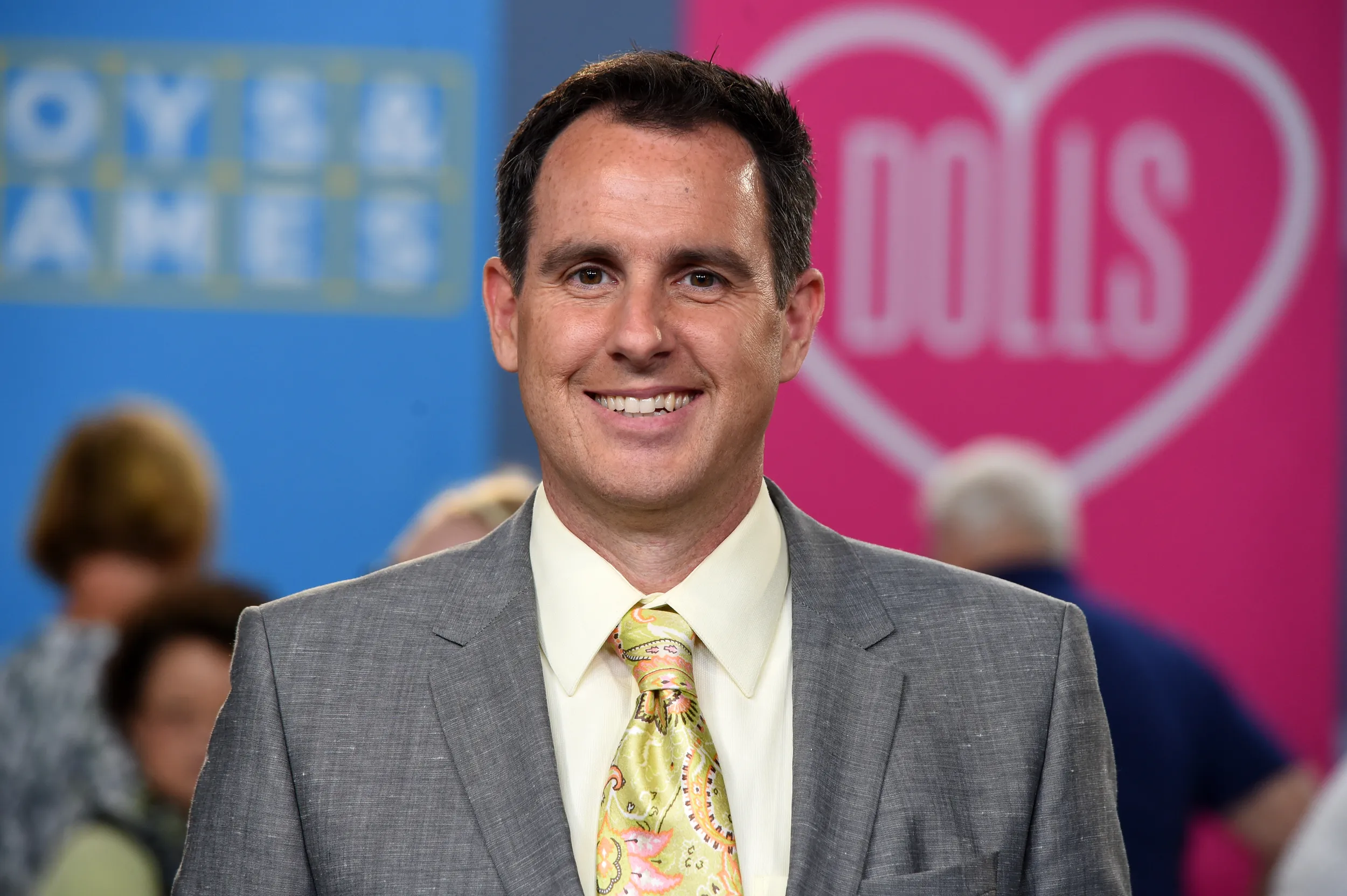Previous Episode
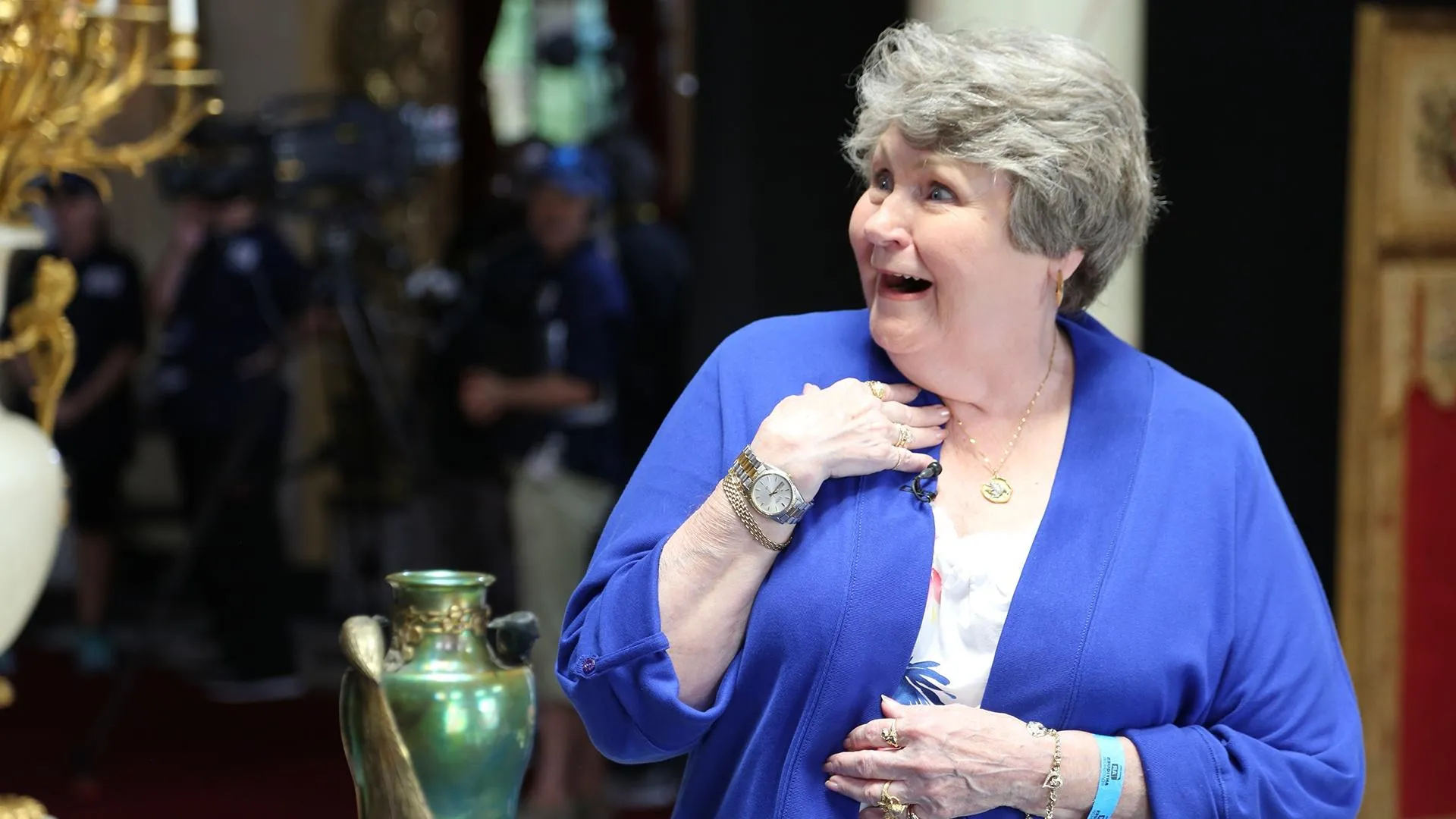
episode
Ca' d'Zan, Hour 3
ROADSHOW doesn’t clown around when it comes to show-stopping appraisals at Ca' d'Zan!
Next Episode
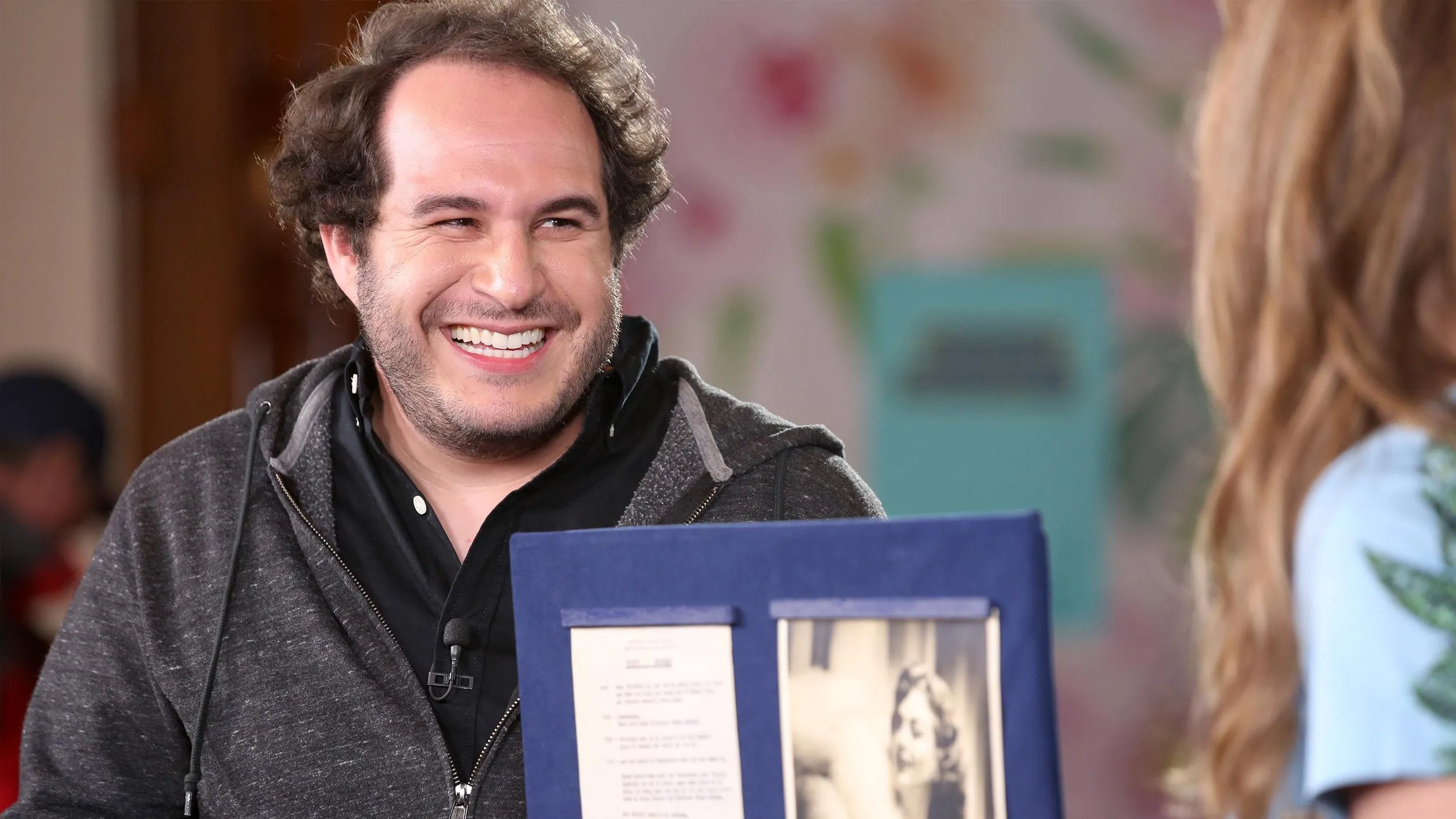
episode
Hotel del Coronado, Hour 2
Discover covetable California items appraised at Hotel del Coronado!
Check into Hotel del Coronado to see sensational finds at a stunning seaside setting!
MARK HOST: ANTIQUES ROADSHOW is treasure hunting at the Hotel del Coronado in Coronado, California.
GUEST: In 1959, the U.S. sent a kitchen of the future to Moscow, for a world exhibition.
GUEST: Wow, that's great.
HOST: The island of Coronado, across the San Diego Bay, has been a resort community since the late 1880s. It was designed that way, the grand plan of two entrepreneurs, Elijah Babcock, Jr., and Hampton Story, who had seen its potential while hunting and fishing there. With the help of investors, Babcock and Story bought all of Coronado for $110,000. They moved quickly to set up utilities, municipal structures, and built this impressive building, the Hotel del Coronado, which officially opened in February of 1888. Today, the Del, as it's affectionately called, is hosting ANTIQUES ROADSHOW as we continue our search for America's treasures.
APPRAISER: You feel the age of the barn, and I like the fact that you can see through the barn into the mountains behind it.
GUEST(laughing): You're waiting for it to fall in.
APPRAISER: Yeah, right, right.
GUEST 1: I bought it online, but the guy was selling a bunch of stuff from the Bobby Bonds estate.
GUEST 2: Not in my house. You can keep it in your den. (laughing) Not going in my front room.
GUEST: I brought a statue of Willie Mays' hands and forearms when he made the catch in 1954 off the bat of Vic Wertz, in the World Series.
APPRAISER: Did you see the catch on TV?
GUEST: Yes, I did. And I've seen it many times on
film.
APPRAISER: Replays, yeah.
GUEST: I bought it online in an auction. And it is from the estate of Bobby Bonds.
APPRAISER: Okay. Well, it is definitely one of the more unusual items we see.
GUEST: Yes.
APPRAISER: In fact, when you first came to the table, and we were looking down in there, we were trying to figure out, what is that?
GUEST: Right.
APPRAISER: Yeah, not something I've seen before. That is great provenance that you have, that it came from Bobby Bonds. And as we did more research, we see that the company that actually made this collectible worked with the Bonds family and was lifelong friends of the Bonds family.
GUEST: Right. It's got a signed glove here. It's not a real glove. It's a little kid's glove, and a signed baseball with it.
APPRAISER: Yeah, okay. Yeah, so it's an unusual collectible. There's a picture on the front of the certificate of authenticity card.
GUEST: Right.
APPRAISER: Where Willie came in and actually dipped his hand into the wax to do a wax mold.
GUEST: Right.
APPRAISER: Then they recreated what his posture would have been, what his, how his posture, fingers would have been when he made the catch.
GUEST: Right.
APPRAISER: Made this collectible that's only an edition of 200. We have the signed glove, the signed ball with it. Any idea what you expect it to be worth?
GUEST: Well, I paid $500 for it.
APPRAISER: Okay, yup. Well, we did find a couple that have come up for auction. However, the most recent one being 2011.
GUEST: Okay.
APPRAISER: So I'm going to put a value on this one at auction of $1,200 to $1,500.
GUEST: Oh, great. Great, thank you.
GUEST: In 1959, the U.S. sent a kitchen of the future to Moscow for a world exhibition. And they hired a Detroit industrial design firm by the name of Sundberg Ferar. And Carl Sundberg, the founder of this firm, was my father. And the day before the exhibition opened, Vice President Nixon flew to Moscow so that he could ask Khrushchev to come in for a private showing of the kitchen itself. So he took him through the exhibit, and they got to talking about some of the different appliances and stuff that were in the kitchen. And Khrushchev started to get a
little testy about it. Now, you had two men that both had tempers at this point. So this conversation got extremely heated. So later on, it got to be known as "the kitchen debate." After the exhibition was ended, this table ended up in my family's kitchen. So this is the table that we ate at and played cards at. Later in the year of 1959, still, we went to the movies, and at that time, movies would be shown with a newsreel at the very beginning. So we watched this newsreel about the kitchen debate.
APPRAISER: Yeah.
GUEST: And we're halfway through it, and my husband, Bob, said, "There's your table." And so we went back, we talked to my dad, and he had never even told us the story of it. We really didn't know anything about it. So I have to say, it's got all the battle scars on it, because we used it as a kitchen table.
APPRAISER: Well, I'll tell you, it's a wonderful table with a great story.
GUEST: Mm-hmm.
APPRAISER: And, basically, word for word, you know, the entire conversation between Nikita Khrushchev and Richard Nixon is online, and you can see the whole thing.
GUEST: Yes.
APPRAISER: And it's a reasonably heated argument, too.
GUEST: Oh, very much so.
APPRAISER: Not only does this piece have a wonderful, historical significance, but it's also a wonderful piece of modern furniture.
GUEST: Yes.
APPRAISER: And in a lot of ways, it sort of displays what's best about modern furniture: The legs are minimal; the top, I believe, is rosewood.
GUEST: Rosewood, yes.
APPRAISER: It's spare, yet it uses the thinness and the discipline of the architecture to make a loud statement.
APPRAISER: You have this, sort of this historical path with all these
GUEST: Right, right.
APPRAISER: different photographs you've got. And this, if I'm not mistaken, is the kitchen itself.
GUEST: That is the kitchen itself. And the photographs we got from the newsreel.
APPRAISER: This, I believe, was your father?
GUEST: That's my dad, Carl Sundberg, and the man on the right is Montgomery Ferar.
APPRAISER: And this last photo?
GUEST: Right. This is the photo that was part of the newsreel itself. We wanted one with the two men together. And then we sent this to Vice President Nixon and asked him if he would sign it for us.
APPRAISER: Yeah, yeah, it's wonderful, it's autographed. So we have Nikita Khrushchev.
GUEST: Right.
APPRAISER: Richard Nixon.
GUEST: Right.
APPRAISER: On some level, this is a very difficult table to appraise.
GUEST: I would think.
APPRAISER: It's only one. This table represents everything good about modern design. If you brought this table to auction...
GUEST: Right.
APPRAISER: I would put $15,000 to $25,000 on it.
GUEST (chuckles): Okay.
APPRAISER: So I also took the liberty, and I hope you don't mind...
GUEST: Okay.
APPRAISER: But of showing the Richard Nixon autograph to our photograph department.
GUEST: Okay.
APPRAISER: And they said that the autograph, the photograph together would be $300 to $500.
GUEST: Okay.
APPRAISER: So on top of the table...
GUEST: All right, a little bonus.
APPRAISER: Another $300, $400, $500 for the photograph.
GUEST: Excellent, excellent. Oh, that's wonderful.
APPRAISER: These two figures have what appears to be original pigment, particularly the black outlining the drapery. That red looks a little intense to me. Maybe that was touched up later.
APPRAISER: It's missing its tacking edges. Tacking edges is how you stretch a painting. Did you look up this artist?
GUEST: I think at one point we did and didn't really come up with anything.
GUEST: I brought in a watch, a lady's wristwatch that was my aunt's and she passed away about 16, 17 years ago. She was a wonderful woman. She was an administrative secretary for several organizations back East. And upon her retirement, as she was cleaning out her desk drawer, she found this watch. It had not been hers. And no one had ever claimed it, and her boss says, "Well, you're retiring. You just take this watch."
APPRAISER: Well, it was a great retirement gift. Have you ever had it appraised?
GUEST: No, I didn't have it appraised, but I had an offer from an estate jewelry buyer about 12 years ago, who offered about $3,000.
APPRAISER: Okay. Well, your watch was made by Audemars Piguet. It's one of the finest Swiss watches made. And the design of it is absolutely incredible. It's circa 1940. And the watch is made in platinum. The bracelet is also platinum. You have buff-top, calibrated rubies. Those are Burma rubies that have been polished, almost like a cabochon, but we call those buff tops. And then you have trillion triangular diamonds, all the way around. And, also, on the edge of the case, on the top and the bottom, you have trillion diamonds. And then you have kite-shaped diamonds. So they're all very unusually cut diamonds. To me, it's breathtaking. I think I'm going to surprise you. The value today on this watch, retail, I see to $25,000.
GUEST: That's wonderful. Terrific. I'm glad I didn't sell it off before.
HOST: Our crew set up in the Del's main dining room, the Crown Room. The Crown Room is 60 feet by 160 feet, with a 33-foot-high self-supported and vaulted ceiling made of Oregon sugar pine.
GUEST: Actually, my wife acquired it. We lived in Massachusetts in the mid-'70s.
APPRAISER: Mm-hmm.
GUEST: And my wife began collecting basically lovely pieces of old clothing.
APPRAISER: Mm-hmm.
GUEST: And we were at a small show, and she got talking to an elderly woman about the fact she loves... And the lady said, "I have something to show you."
APPRAISER: Mm-hmm.
GUEST: And she said, "Wait here." And she went to her car, and she brought back a book with the name Pavlova on it.
APPRAISER: Right.
GUEST: And she opened it up, and she said, "I have this dress."
APPRAISER: Mm-hmm.
GUEST: And my wife said, "My God, that's gorgeous." And apparently, my wife asked her if she'd like to sell it. And the lady said, "Yes." And my wife very quickly said, "I will buy it from you." And she did.
APPRAISER: And how much did your wife have to pay for it?
GUEST: My wife believes that she paid around... A little over $50.
APPRAISER: Uh-huh.
GUEST: And two dollars for the book.
APPRAISER: Oh, my goodness.
GUEST: Right, I remember that.
APPRAISER: She bought the book with it.
GUEST: Yes, she bought the book, as well.
APPRAISER: Okay. You have a beautiful Fortuny Delphos dress, which is made in Italy by Mariano Fortuny. He developed the process for this pleating, and he made these dresses from 1907 until 1949, when he passed away.
GUEST: Wow.
APPRAISER: And no one has been able to duplicate the pleating process. Fortuny signed all of his pieces.
GUEST: Okay.
APPRAISER: And this one has, it says... It's a vertical signature on the back center seam in red lettering,
GUEST: Right.
APPRAISER: where it says, "Fortuny." They're made out of China silk, and you cannot dry-clean them, you can't launder them, because the pleats will disappear. If you go to a dinner party and sit down too long, the pleats are going to flatten out.
GUEST: Oh.
APPRAISER: But they're just some of the most exquisite evening gowns ever made for women. They're amazingly sexy for such an early dress.
GUEST: Oh, yes.
APPRAISER: Very form-fitting. They have a cord through here to adjust the neckline, and then these cords, decorative cords here, are trimmed with Venetian glass beads, because he was in Venice.
GUEST: Oh, right.
APPRAISER: So these are all Venetian glass beads on the cord, on the beginning of the shoulder, the sleeve, at the bottom of the sleeve, which then is laced all the way through the sleeve. You can adjust the fit of the sleeve with these cords inside here.
GUEST: Right.
APPRAISER: They fit a range of sizes, because the fabric does have a good bit of give
GUEST: Play
APPRAISER: to it in the pleats.
APPRAISER: So that you could order them, pick your color, and you'd pick your length. Because they were meant to puddle on the floor, like this.
GUEST: Right, like that.
APPRAISER: But if you were as short as I am, you would get a different length than the woman who owned this dress. I mean, one of my favorite things in vintage clothing is a Fortuny gown.
GUEST: Yeah.
APPRAISER: And I was just thrilled to see you bring it in.
GUEST: I have never seen it like this.
APPRAISER: On a form.
GUEST: On a form. It is truly stunning.
APPRAISER: Yeah, they're...
GUEST: And I understand why my wife fell in love with the picture.
APPRAISER: Yeah. They come in a range of colors. He dyed the silks in a range of colors. The black dress, it's just so classic and so elegant
GUEST: Yes.
APPRAISER: -and so simple.
APPRAISER: It's as timeless now and as attractive at a party now, you know? And it's a dress that you don't really need to wear a thing underneath. This dress is in really good condition.
GUEST: I'd imagine, because the pleating is so...
APPRAISER: No one's been able to duplicate it since he died.
GUEST: It's amazing.
APPRAISER: There's not that many to be found. And they're in great demand. The retail price on this would be $15,000 to $18,000 for this dress.
GUEST: I'm terribly sorry, $15,000 to $18,000?
APPRAISER: $15,000 to $18,000...Yes, yes.
GUEST: I am never going to be able to talk to my wife again.
APPRAISER: (laughs)
GUEST: Good Lord! What a wonderful, oh! She is going to be absolutely overjoyed. And I'm very happy, too.
APPRAISER: Yeah, I'm happy, too. It's a lovely thing to have come to the ROADSHOW today.
GUEST: It's gorgeous, oh!
APPRAISER: It was wonderful to see.
GUEST: Thank you, thank you, thank you.
APPRAISER: What I love is, this correlates to me. Over here is the, the venal drunken side of me.
GUEST: (laughing)
APPRAISER: Oh, wait, I'm sorry. That's my intuitive, reasoning, reflective faculties,
GUEST: Yes.
APPRAISER. Okay.
APPRAISER: And here's the best part. Right here, you got the eight-track player. So not only can you do records, you can do the radio, you've also got your eight-track humming along.
GUEST: Yeah.
APPRAISER: So if you want to listen to the Village People, you're set for most formats.
GUEST: Well, it was my father's. He had it for many, many years. And when he passed, I got the painting. I don't know when he got it, whether it was before I was born or later.
APPRAISER: And is there any connection to the family with the boat, or...?
GUEST: Well, we lived in Gettysburg.
APPRAISER: Oh, okay. There you go. Well, this is done by an Italian artist named Tommaso de Simone. And he was born in 1808, and he was really one of the better ship painters in Italy. In fact, he's so good at rendering ships, that in the 20th century, when historic ships needed to be restored, they would often refer to his paintings to make sure they got the rigging correct and the proportions of the ship, and so forth. This was painted in the Bay of Naples, probably in the late 1870s. It's signed in the lower right corner, and there's part of a date we can see. And I see "187," and then it's blank. So I'm going to guess it's obviously painted in the 1870s.
GUEST: I guess.
APPRAISER: The artist died in 1888. It's a pretty impressive American ship that was commissioned in 1864. And it was bought from the Brits. It went to an international auction, and the Americans bought it and recommissioned it the Gettysburg. You get to see the waterline just beautifully going across.
GUEST: Yes.
APPRAISER: The rigging is just perfectly done. And I love having the American flag flying off the rear mast. I think it's just great. So there's a strong demand for Tommaso de Simone's work. I bet at auction today, this would bring somewhere between $8,000 and $12,000.
GUEST: Okay. Thank you.
APPRAISER: My pleasure!
HOST: This room might be haunted. The ghost of Kate Morgan is said to engage in minor antics in this room. Miss Morgan was found dead on November 29, 1892, with a gunshot wound to her head, on a hotel staircase leading to the beach. Some skepticism remains about the coroner's pronouncement that the wound was self-inflicted.
APPRAISER: Tell us how you got this great baseball player's pocket companion.
GUEST: Well, I don't think it's very pretty, but... But my husband, 20 years ago, purchased a storage locker. He paid $200 for the whole storage locker. There were some books in there, and they were old baseball books from, like, the early 1900s. This was in there. Unfortunately there was a leak in the storage locker that this book was in, and it did get water-damaged. But we thought it was still worth keeping, and we have it in our collection, so...
APPRAISER: And how long ago was that?
GUEST: About 20 years ago.
APPRAISER: And so, and so why did you keep it?
GUEST: Just, my husband is an avid baseball card collector, and we just... I love buying him old judges' cards and old tobacco cards. And so it's just among one of the souvenirs.
APPRAISER: This is considered by historians and collectors to be the most important early baseball book.
GUEST: Wow! That's exciting, yeah.
APPRAISER: The most. And why is that? Because this was a book from 1859 that was carried by the players for the rules and regulations.
GUEST: (gasps) I wonder who carried it back then, yeah.
APPRAISER: Absolutely. So why would they have carried this, right?
GUEST: Yeah.
APPRAISER: That's the question. And yet there are less than ten known to exist.
GUEST: Wow.
APPRAISER: Let's go back to the history of baseball.
GUEST: Yep.
APPRAISER: One of the first mentions of baseball was in Pittsfield, Massachusetts, in 1791.
GUEST: Wow!
APPRAISER: And it was mentioned because there was an ordinance preventing baseball from being played within 80 yards of the meeting house.
GUEST: (laughing) That's amazing.
APPRAISER: I guess they were breaking windows, even in those days.
GUEST: Yeah. And I think the first baseball games were played where they had to throw the ball at the guy to get him out. That's how they got out.
APPRAISER: That's absolutely right. That brings us to this book.
GUEST: Oh, okay.
APPRAISER: Because this book was a book that was carried by players in order to remember the rules and regulations. Well, why would they have to? Because baseball evolved from Massachusetts, becoming a major sport in the Northeast. And it was played in Massachusetts, New York, New Jersey, and Philadelphia, primarily.
GUEST: Right, right.
APPRAISER: And there were two sets of rules. There were the Massachusetts rules, which we have right here...
GUEST: Wow.
APPRAISER: And there were also the New York rules. And we're talking, again, the early to mid-1800s.
GUEST: Yeah.
APPRAISER: So here's the Massachusetts game. Now, this doesn't look anything like today's game, right?
GUEST: No, no, it doesn't.
APPRAISER: So we have a square here. And here's where your batter or striker would be, here's where your thrower would be, and here's where your catcher would be.
GUEST: Okay, wow.
APPRAISER: Now, you would hit the ball, and here you would have your A base, your B base, your C, and you would finally score when you got to D.
GUEST: Oh, wow, okay.
APPRAISER: We have 60 feet, not 90.
GUEST: Okay, yep.
APPRAISER: And these were not bases, they were stakes. So you would touch the stakes.
GUEST: Wow! Okay.
APPRAISER: We're going to go back here to our first tab. This is the New York game. New York started becoming the epicenter of baseball in the 1850s. And this is
GUEST: That’s awesome.
APPRAISER: the New York set of rules, the New York diagram. This is what, is much more what we're used to today.
GUEST: Yeah, right, right.
APPRAISER: So we've got a diamond shape.
GUEST: Yep.
APPRAISER: And we've got 90 feet.
GUEST: Yep.
APPRAISER: And we've got bases. So in 1859, they produced this book,
GUEST: Yep.
APPRAISER: and they did in 1860 and '61. We don't see any after that, largely because of the Civil War.
GUEST: Oh, yeah.
APPRAISER: Now, the Civil War had a double impact. Believe it or not, it did grow the game exponentially, because it was played in a lot of army bases, both in the South and in the North. And it grew to be a truly national game, and actually ended up extending to the West Coast.
GUEST: Right.
APPRAISER: So Massachusetts went by the wayside. The New York rules basically stood until today.
GUEST: Right.
APPRAISER: You did mention, and we'll go back here, you do see...
GUEST: Water damage.
APPRAISER: We have the water damage. And that's virtually on every page, and that does make a difference.
GUEST: I'm sure it does.
APPRAISER: How much did you think it was worth?
GUEST: I said maybe, maybe $300, because of the water damage.
APPRAISER: I would place an auction estimate probably in the $4,000 to $6,000 range.
GUEST: Wow! That's amazing! Woo-hoo! I wish he was here. I would give him a big hug and a kiss. I love you, honey. Oh, that's very cool.
APPRAISER: And if there wasn't any water damage, I would probably put an auction estimate of $8,000 to $10,000 on it.
GUEST: Wow.
GUEST: Well, it's a pub sign from Prince of Wales Pub in Kent, England. And it was brought over from England. At some point, it was one of the walls in a booth, a very special booth, in a pub here in downtown San Diego. The pub went under, unfortunately, but we kept the sign and thought we'd bring it today.
GUEST: These are two pieces that I got at a flea market. They're mirror images. I call them "the twins," and I'm just curious to know what the origin is. They may be Spanish, they may be Italian, possibly from the Philippines. I assume they came from a church.
GUEST: Both of them were in my mom's care, and this one, actually, I'm not sure where it came from, but I think she bought it somewhere in San Diego, maybe 30 or 40 years ago. This one I know she brought back either from China or Hong Kong. My husband's never liked this one. So it sits in a powder room.
APPRAISER: So this one sits in a powder room, okay.
GUEST: And this one goes in a box in a closet.
APPRAISER: So this one, no one sees this one.
GUEST: No one sees that one.
APPRAISER: And people see that occasionally. Well, do you have any idea where this one is from? I think you have some good idea here.
GUEST: Um, China?
APPRAISER: It is from China, yeah. And the decoration is very distinct on this piece. He is a Taoist immortal figure named Liu Hai. He was a bit of a hermit, didn't have any friends, except for the pet frog, who you may not have even noticed in the decoration, living on his shoulder. Well, the frog only has three legs, but would frequently fall down open wells, and Liu Hai would have to fish him out using the string of coins that he's holding in his hand, because that's the only thing the frog was interested in. This piece is a little bit more conventional, you could say, in its decoration. It's very wonderfully enameled. It's porcelain. Of the two, one of these is, I would say, is considerably older. Any idea which piece pre-dates the other?
GUEST: I would think maybe the bowl is older.
APPRAISER: It's actually the vase that's older.
GUEST: Oh.
APPRAISER: Yeah, the vase I would date to about the 1870s or 1880s. I think this porcelain-covered box likely dates from the 1920s. We actually call these porcelain boxes, even though it's... one thinks of a box as having some square kind of dimension. But it's beautifully potted. It's well made, fits very well. Of these two pieces, do you have a preference, or... which one you like the best?
GUEST: Well, I like with the little people on them, that one, the bowl.
APPRAISER: I, I do, too. It's a good question when we value Chinese porcelain or pottery, or really any decorative arts, how much does age determine value? And in some cases it does, but in this case, this piece from the 1920s is the more valuable of the two. And the reason why is, is just, it has everything that the Chinese collectors, who do drive the market right now, really wish to see. It's beautifully enameled. It's colorful. The condition is excellent. It's a rarer configuration to have the cover on the box in this way. I would say that this vase right here would sell, likely, at auction, in the $2,000 to $3,000 range. This piece, if it would come up at auction, in 2018, would likely sell between $8,000 and $12,000.
GUEST: Nice, great.
APPRAISER: Thank you so much for bringing these in.
GUEST: OK, thank you.
HOST: Here's another haunted room. One story goes that the spirit of the mistress of a former hotel owner, who was pregnant when she committed suicide, moves objects in the room. Another story claims a maid hanged herself here, and her ghost haunts the room.
GUEST: I had been looking at this in a pawnshop in Chula Vista, just south of San Diego, for quite a while, maybe a year or two. And finally talked the owner out of it for what we thought was a fair price, and took it home and then started research, discovered it was Russian, and it, it appears to have Nicholas II's cipher in it, and an inscription on the back, which is a personalized inscription from an officer in an army unit to one of his cadets.
APPRAISER: And how much did you pay for this from the pawn shop?
GUEST: Just under $1,000.
APPRAISER: Just under... and how long ago was that?
GUEST: Eight or ten years, something like that.
APPRAISER: This is one of the most beautiful pieces of goldwork I've seen in a very long time. What you have here is a, what's called a jeton, spelled J-E-T-O-N.
GUEST: Yeah.
APPRAISER: Which is basically a miniature order to be given as a gift. This was very popular, particularly in Russia. This particular jeton is in the form of a, what's called a sabretache, which is the bag that would have been worn by a cavalry officer from these straps here,
GUEST: Right.
APPRAISER: from their left side while riding the horse.
APPRAISER: There's just one hallmark on it, so we don't know who it's made by, but we know that it was made sometime between 1904 and 1908 and that it's made of gold, and it was made in St. Petersburg, Russia. This is all intricate, very beautiful goldwork. You are absolutely right. It's the monogram of the last tsar of Russia, Nicholas II, in the center, over a beautiful ground of red, deep red guilloché enamel. The condition of the enamel, the condition of the gold, is absolutely wonderful. After a little research, we discovered this is from the Imperial Guard, the personal life guard of the last tsar of Russia.
GUEST: Wow.
APPRAISER: And specifically the Hussar Regiment.
GUEST: Okay.
APPRAISER: Which was a light cavalry brigade. It's interesting, there's an inscription on the back. What you'll see is that it was... I'll skip to the end first. That it was from a gentleman called Shevich, which is written here in Cyrillic.
GUEST: Right.
APPRAISER: And he was a commander of the Hussar Regiment.
GUEST: Okay.
APPRAISER: So he was quite an important person at the time. And it was a gift to a princely family, which is named here, Alexander Lieders-Weymarn, who was a minister in the Interior Ministry of the tsar. So also an important person. It was a gift in 1905. Probably on the occasion of a new group of cadets entering into this regiment or finishing their training, or something like that.
GUEST: A graduation sort of thing.
APPRAISER: Exactly. So you see how this is a pouch here.
GUEST: Yes.
APPRAISER: And what's interesting about the pouch, in this case, just like a regular pouch, it actually opens. So it's also a locket that can be worn.
GUEST: Yes.
APPRAISER: Perhaps for the... a picture of the family of the recipient of the medal.
GUEST: It would have been nice to have that picture in there.
APPRAISER: Right, unfortunately, it's empty. Now... This was a gift for officers of the regiment, of the Hussar Regiment, from the commander of the regiment. It was... this was not bestowed on just anybody. This was one of the nicest and most expensive jetons, or gifts, that could be bestowed at that time. Some people have said this is one of the most beautiful made in Russia at that period, even. I think today, a retail value, conservatively, would be $12,000 today.
GUEST: Interesting.
APPRAISER: So I...
GUEST: But I, I'm more delighted to find the history of it, that that regiment was directly associated with the tsar.
APPRAISER: Absolutely.
GUEST: That, to me, is fantastic.
APPRAISER: Most people think of sculptures as monuments, famous people, historical figures, and all of that. So it's actually sort of rare to see this kind of intimate mother-child interaction. The original was probably modeled in either clay or wax.
APPRAISER: It's a mystery? You don't know anything about it?
GUEST: Absolutely nothing, other than that man did it.
APPRAISER: Okay, well, we'll see if they know anything about the artist at Prints and Posters.
GUEST: When my parents came back from their first vacation to Europe, they had perfume and different gifts for my sisters. And then they suddenly looked at me and goes, "Oh, well, maybe you would like this." And my father pulled out this 45-RPM record. And it was signed by the artists. At the time, I had never heard of them. It was a group of people that he ran into at the hotel he was staying at in Paris.
APPRAISER: Right.
GUEST: And Dad, looking around, he sees these young guys in ripped blue jeans and a little disheveled. He just needed to understand what they were doing in this nicer hotel that he was at. So he went over to their table, and he got the story that they were a rock band, and they had just cut their first record.
APPRAISER: Right.
GUEST: And were touring Europe for the first time to try and promote it. So Dad being Dad, you know, and they had the record with them.
APPRAISER: Okay.
GUEST: So he gave them five dollars, and they all signed the record. And then Dad in leaving, you know, he says, "Well, guys," you know, "I wish you a lot of luck, but you might want to think about getting a real job."
APPRAISER: (laughing) What a great story-- that's amazing. And what year was that?
GUEST: This was 1963 or 1964, I think.
APPRAISER: 1960... I think it probably is 1964, because this particular E.P. for the Rolling Stones came out in '64, so that pretty much matches up with your story.
GUEST: Yeah. I've had the record for years and years.
APPRAISER: Right.
GUEST: And then back in the 1990s, they were doing a tour of North America, and we decided, "Well, maybe they'd like it back for their archives, or something."
APPRAISER: Right.
GUEST: So I contacted the Rolling Stones' road manager.
APPRAISER: Okay.
GUEST: Through my mother, who worked at a local playhouse. They wrote back offering us, you know, to come to a show, they'd be happy to have it.
APPRAISER: So you never got the tickets?
GUEST: No, we tried getting back to them, but they had left New York, and I had no way of reaching them anymore.
APPRAISER: So they didn't get the record.
GUEST: We didn't get the record back.
APPRAISER: (laughing) Which is probably a good thing, in hindsight.
GUEST: For me at this point, yeah.
APPRAISER: Let's have a look on the back. We've got four signatures. Now, I can see Brian Jones, we've got Keith Richards; Mick Jagger, of course, and we've got Bill Wyman. There's one missing, I notice, which is Charlie Watts.
GUEST: He could have been off to the bathroom at the time.
APPRAISER: Right, right.
GUEST: Or he maybe didn't like what Dad said to them. I don't know what the reason is.
APPRAISER: Well, the good news is-- sorry, Charlie, if you're watching-- but Charlie Watts is not the particularly important signature here. If you were going to not have one of the signatures, Charlie is probably the one.
GUEST: Charlie is the best one not to have? Good to know.
APPRAISER: So that, in terms of the value, that's, that's a good thing.
GUEST: But it would be nice to have them all, though.
APPRAISER: Yeah, absolutely. However, this being such an early E.P., it's very collectible. I would say conservatively at auction today, you would probably be looking at, in the region of between $2,000 and $4,000.
GUEST: Really?
APPRAISER: Very desirable. If you had the complete set, it might be worth a little bit more, but it's, it's an exceptional piece. And being so early in the, in the whole evolution of the Rolling Stones...
GUEST: Right.
APPRAISER: it's a really desirable item.
GUEST: Well, my grandfather was Alexander Golitzen, who was art director for Universal Studios and one of his good friends and colleagues was John Datu Arensma. And when I was a little boy, he gave me this belt buckle. Had no idea what it was, and I was on vacation in Catalina. And I saw this big cutout of John Wayne, and on his belt was that buckle. And I said, "That's the one that John gave me." So I did a little research, and I know that John was the art director on "Red River," and that Howard Hawks was the director, and he made these belt buckles out for the principal cast and crew. And each one was personalized with their initials, and that's "J.D.," for John Datu Arensma.
APPRAISER: So you're a lucky kid that he just... you took a shine to it, and he gave it to you.
GUEST: Oh, he just gave it to me out of the blue.
APPRAISER: That's pretty spectacular, because these, obviously, have kind of taken on a life of their own in the collecting world, because it became so famous with John Wayne wearing it in all of the subsequent films, and it's an incredibly famous story. It's based on Thomas Dunson-- his character in "Red River," his brand from the ranch. So that's what the design is here. Famously, John Wayne's went missing after his death. So it's still at large, no one's found it. But he did also wear one every day that was a smaller version, that was his everyday buckle version of this. And that one was still around at the time he passed. The values are kind of all over the place. If this were John Wayne's personal buckle, obviously, we'd be talking about a completely different value. But even the fact that it's from the production, and we know who it's from, and we know how you got it, and the provenance is solid, it still is a really desirable piece in the collecting world. So to have one that's tied with the production, I would say at least in the $3,000 to $5,000 range at auction.
GUEST: Wow.
APPRAISER: As an estimate.
GUEST: (laughs) Wow. That's fantastic.
APPRAISER: The John Wayne belt buckle, the one that did still exist at the time that he died, it's a smaller, it's shorter. It's about that high, because it was less uncomfortable, I think, for him to wear every day. That sold in his estate auction, and that sold for just over $19,000. But if we had the one that he wore in all the films, the one that went missing, we'd probably be talking six figures.
HOST: The Del reportedly cost $600,000 to build and another $400,000 to furnish. That million-dollar price tag translates to over $26 million today.
WOMAN: Well, this clock was given to my grandfather, who was from Denmark, and he was the first violinist at the Royal Opera for 43 years.
APPRAISER: Ah.
GUEST: And after he had been there for 25 years, he got this beautiful clock from the orchestra at the Royal Opera as an anniversary present. And then when he passed away, my mother, who also was an opera singer at the Royal Opera in Copenhagen, she inherited the clock.
APPRAISER: I see.
GUEST: And she just passed away in December at 101. And now we have inherited the clock.
APPRAISER: So what year would you imagine it was when he received the clock as a gift?
GUEST: In 1939.
APPRAISER: Oh, wow. In order to show you some of the features, I'm going to lift the dome off.
GUEST: Okay.
APPRAISER: And set it over to one side.
GUEST: All right.
APPRAISER: It's what we call an annular ring clock.
GUEST: Okay.
APPRAISER: So where we're used to having clocks with a minute hand and an hour hand, this clock has no hands at all.
GUEST: Right.
APPRAISER: In place of the hands, it has these rings. And specifically, this ring is the hour ring. So this makes one revolution every 12 hours.
GUEST: Oh, yeah?
APPRAISER: And this is the minute ring, and this ring makes a complete revolution every hour. So it's comparable to the hands on a clock.
GUEST: Right.
APPRAISER: But in this case, the hand doesn't move. This hand remains stationary. And so you read the time as these rings pass the stationary hand, so to speak.
GUEST: Ah.
APPRAISER: It's not a particularly rare clock, but they're unusual. You're not going to pick up the phone and order one anytime soon.
GUEST: Right.
APPRAISER: It's very special.
GUEST: Yeah.
APPRAISER: Now, another thing that makes this very, very special is who made it. His last name was Lepaute. He was born in 1720 and died in 1789 in Paris. He didn't make ordinary clocks. He made clocks for kings and queens. It has a wonderful satinwood base with this decorative band here. The base is gilded bronze, and then it features these wonderful dolphins that support the clock itself. It happens to have the cutest little gridiron pendulum that you see right here. It's a wonderful clock. It's easily the most unusual clock that we've seen here today in San Diego.
GUEST: Really?
APPRAISER: Yes.
GUEST: Yeah.
APPRAISER: Very special. So the largest condition issue it has is, it's missing its cap.
GUEST: Oh!
APPRAISER: There was a gilded brass cap that went over top of this, to make it look like a sphere.
GUEST: Oh.
APPRAISER: And it's probably been gone a long time, because you never saw it.
GUEST: No.
APPRAISER: But right here is a threaded hole that would have held the dome down.
GUEST: Oh.
APPRAISER: So that's a pretty serious issue.
GUEST: Oh, yeah.
APPRAISER: As far as value is concerned.
GUEST: Yeah, we have never seen it.
APPRAISER: Now, lucky it lives under a glass dome.
GUEST: Right.
APPRAISER: So the works aren't affected by the dust.
GUEST: All right.
APPRAISER: But in the ideal world, it would have its gilded bronze cap.
GUEST: Oh! That's too bad.
APPRAISER: Yeah, yeah. Well, it is what it is.
GUEST: Yes, of course.
APPRAISER: Now, as far as value is concerned, in its present condition, my colleagues and I have decided that it's worth $10,000 in a retail setting.
GUEST: Wow.
APPRAISER: That's a lot of money.
GUEST: (laughing) That is a lot... That is a lot of money.
APPRAISER: Now, if it still had, if it still had its brass cap, it would be $15,000.
GUEST: Wow, that's amazing.
APPRAISER: But...
GUEST: I cannot identify the signature.
APPRAISER: And do you display it in your home?
GUEST: Oh, yeah, yeah. It's right next to my daughter's third-grade drawings, and... No, and a lot, I have a lot of other things.
APPRAISER: So you've got the painting here, third-grade art here, and the surfboards over there?
GUEST: Pretty much. Yeah, and she's actually an artist, so...
APPRAISER: Oh, that's wonderful.
APPRAISER 1: Is it? Ask Kathy.
APPRAISER 2: What do you think, Kathy, Czech or Turkish?
APPRAISER 3: Can you turn it a little bit more?
APPRAISER 2: Yeah. So it's got the jeweling.
APPRAISER 3: I mean, I've looked on almost every possible...
APPRAISER 1: It's almost mirrored...
APPRAISER 2: Exactly. I'm leaning towards Turkish. It's got those kind of designs, as well. With the... Czech or Turkish. So, unfortunately, the damage is going to kill probably most of the value.
GUEST: Well, where I live, they had a community garage sale. When I saw Godzilla, I said, "I have to have it." And I, I got it.
APPRAISER: So if you don't mind me asking, what did you pay for this beautiful model?
GUEST: I paid a dollar.
APPRAISER: A dollar! Well, that is money well spent. I mean... So this is made by Aurora Plastics, which is a New York-based toy company established in 1950. Now, this is part of 13 models that Aurora had produced in their monster series, beginning about 1962. The first model they actually had produced was Frankenstein. But in 1964, two years later, this model would have been released around the time Godzilla versus Mothra was being released in theaters, which was only ten years after the very first Godzilla film released in Japan. Now, when it comes to Aurora model kits, original is key, and this is as original as it gets. It's never been assembled. It's never been painted. And what it's made from is actually what we refer to as fuchsia plastic. But when it comes to model kit collecting, it's condition and being unassembled. Now, you have all the pieces here, you have the original instruction pamphlet, and you have the box, which is in unbelievable condition. I mean, just look at the box art on that thing. It's absolutely gorgeous. So when it comes to the Aurora models, they were reissued in the 2000s, mid-to-late 2000s. But what's funny is, the monsters like Frankenstein, Dracula, Creature from the Black Lagoon, Wolf Man, all these really old Hollywood horror stars, the market has come down a little bit on those model kits, versus, while Godzilla is appreciating, because just, how cool is Godzilla? Everybody loves Godzilla. Honestly, he's my favorite. For an original Aurora Godzilla kit in today's world, it would be $300 to $500 at auction. So spending a dollar, you have literally done 300 to 500 times your dollar spent. So that is a super-good investment.
GUEST: I brought in a picture of my great-grandfather, Michael Doane, and he was with the Light Dragoons of San Francisco. And they were a militia in San Francisco between 1852 and, I think, 1888. And these are a couple of his sharpshooter medals.
APPRAISER: Well, they're wonderful. And when you came up to the table, the three of us got really excited about them, as you noticed, yeah.
GUEST: I noticed that.
APPRAISER: We've got the picture of him in his militia uniform here.
GUEST: Uh-huh.
APPRAISER: But the really interesting parts are the two medals.
GUEST: Okay.
APPRAISER: So we have the shield. Now, the shield was presented once a year, but it was presented if, if he didn't win the next year, he didn't get it, it went to somebody else.
GUEST: Right.
APPRAISER: So if we look at the back, we have "1867," was when he first won it.
GUEST: Uh-huh.
APPRAISER: We have "1869," somebody else ended up with the medal.
GUEST: Okay.
APPRAISER: Then we have here "1868," "1870," and then he got it back again in 1872. This shield is 18-karat gold.
GUEST: Okay.
APPRAISER: We went to our friends, our colleagues at the jewelry table, and we had them test it. The eagle is not. That's been applied, but it's, it's plated. It's got this wonderful "First Dragoons" here, and then "First Prize," with the crossed sabers and the pistols.
GUEST: Right.
APPRAISER: This medal over here is presented for his 1867 win, which is listed on the back of this medal. This is 14-karat gold, and this is gold-plated. We have, "Best Battalion Shot, First Regiment Cavalry, September 9, 1867," which is the first year that he won, according to this medal.
GUEST: That.
APPRAISER: Take it off and flip around. Then we have here "From Colonel C.L. Taylor," to your ancestor, "First Light Dragoons."
GUEST: They were a small militia, though.
APPRAISER: They were a small militia unit, but they were wealthy. There are all these presentations that are done in that unit.
GUEST: Okay.
APPRAISER: If we had some more time, and you might be able to do this, you might be able to find newspaper articles, doing newspaper searches from this unit.
GUEST: On that, okay.
APPRAISER: There seem to be a lot of those listed in the San Francisco papers. They gave out, for marksmen awards, a variety of different things in militia units all over the country. But... You don't necessarily see a lot of gold medals done this well, also.
GUEST: Right.
APPRAISER: I mean, these are very well done. These are nicely made. Given the fact that the First Dragoons, First Light Dragoons, is a pretty popular unit-- they had a lot of men who fought in the Civil War.
GUEST: Okay.
APPRAISER: And a lot of men died during the Civil War. These are just postwar, and the fact that they're gold, we would put a conservative auction estimate at about $2,000 to $3,000.
GUEST: That's a good one.
APPRAISER: It's a good one. It's a great one.
GUEST: Yeah, yeah.
APPRAISER: And they're wonderful medals. The inscriptions are wonderful.
GUEST: Thank you.
APPRAISER: It's a wonderful handmade decoy, and I think the great thing, the weight.
GUEST: Yeah.
APPRAISER: They've used a printer's clay. And where did you say it was found?
GUEST: In a cabin in Mount Laguna, California.
APPRAISER: Okay.
GUEST: Near the lake up there. I liked it so much I brought it to my house instead of keeping it at the cabin.
APPRAISER: Well, I would too-- I would, too, to enjoy it!
APPRAISER: Sherri, all I can say about this is... (imitating explosion)
GUEST: (laughing) Thank you.
APPRAISER: Where did you get this?
GUEST: My mom. I saw, like, a crazy antique suitcase in her closet, and I said, "What's that?" And she said, "It's a crazy quilt inside." And I said, "Oh?" And she said, "Yeah. If you keep cleaning my house, I'll give it to you." And 25 years ago, it's been in my closet ever since. In that same crazy...
APPRAISER: In your closet for 25 years?
GUEST: Yeah, yeah, after hers, yeah.
APPRAISER: So did she say where she got it?
GUEST: Nothing.
APPRAISER: Well, let me tell you, it's everything that you think a crazy quilt should be. I don't even know where to start: there are birds; here, it looks like an Edward Hicks "Peaceable Kingdom" lion; This wonderful chanticleer blowing his trumpet. There's a salmon here. There's cows, there's dogs. There's a an eagle down here with a snake. And then there's this remarkable scene of what I guess is a circus. Someone in a circus with his horse, and there's a stylized American flag. There's a signature. It seems to read, "M.J. Copple," C-O-P-P-L-E. 99.99% of these were made by women, so we don't know who M.J. Copple was, but we can almost certainly guess that she was a woman, a very talented woman. The impact of this is just astonishing.
GUEST: Thank you.
APPRAISER: And I can just see this framed on somebody's great big wall.
GUEST: Whoo.
APPRAISER: Well, I think that it's worth at least, from an auction standpoint, an estimate of $3,000 to $5,000.
GUEST: Wow, cool, cool.
APPRAISER: And I think if I were you, I would insure it for $10,000. And if this were to appear in an auction, and you had two bidders get tangled up in wanting this, it could easily sell for $10,000 to $15,000.
GUEST: Wow. (laughs) It's been in a closet. It's great.
APPRAISER: Take it out of your closet, put it in a frame, and hang it up in your house!
GUEST: Yeah, thank you! Wow, that's incredible. Thank you. (laughs) Jeez. Oh, boy.
HOST: It's hard to think of a recreational activity or entertainment that hasn't been offered to guests of the Del over the years. Tennis, polo, vaudeville performances, shuffleboard, boating, costume balls, swimming lessons, beauty pageants-- you name it, the Del has probably done it.
GUEST: John Baldessari has been painting for a long time, and my understanding is that there was a time that he burned a lot of his paintings to make cookies and to use in other parts of his art. And this, I believe, was from that era. And the only other thing I know about it is that there's a tag in the back that you could rent it from the La Jolla Museum of Art, by the month. And if you liked it, after a year, you could buy it. And I found that terribly interesting. But other than that, I really haven't researched John that much. I know that he's changed his styles a lot.
APPRAISER: He has. And today he's considered probably one of the most important living contemporary artists. He was profoundly influential on several generations of young artists who are working today. He taught in San Diego and taught in Los Angeles for many years. And in fact, he was born and raised in National City.
GUEST: Yes.
APPRAISER: Which is right across the bay here, just a few minutes away from where we're taping today. He very famously proclaimed in 1971, "I will no longer make any boring art." And it was around the time period that people were starting to understand how important he was to the idea of conceptual art in today's art market. Some of his early shows in the late '60s are among some of the most important works and can sell in the many millions of dollars. The works from the early '60s, of which this is one...
GUEST: Right.
APPRAISER: ...are very scarce, because he destroyed much of that work shortly before he made that very public statement that he didn't want to make any more boring art, thereby, sort of saying that his earlier work to him was boring. Ironically, that has made those works very scarce, and because he went on to become so vitally important to the contemporary art world, these works have now become very valuable. And in fact, he's now including these paintings in his catalogue raisonné, and there are very few of them left. So only the works that were not in his possession-- that were either sold or in museums, sort of thing-- exist today. So it's very rare to see one of these paintings. This example has a really beautiful title. The title is called, "Sign for Rothko and Albers." Rothko and Albers were two giants of the paintings movement. And at the time he painted this, there was no expectation that Baldessari would ever rise to their level, but he is now considered one of, one of the kind of critical influencers of the contemporary art world.
GUEST: Wow.
APPRAISER: The work is oil on canvas, and this is actually a work that he painted himself. Now, that may sound silly to point that out, but by the end of the '60s, he sort of stopped painting on canvas, and he had a very famous show in 1968 where he hired a sign painter to simply paint the artworks for him.
GUEST: Oh.
APPRAISER: So he told the sign painter what to paint, and the sign painter painted the work, and then he signed it and put it up in the gallery, saying, "This is my painting." And it caused quite an uproar.
GUEST: I didn't know that.
APPRAISER: Because people were saying, "Well, wait a minute. You didn't paint them." And he says, "This is not about who painted it. It's my concept." And conceptually, it really opened the door to let a lot of artists take liberties in the, in the art world, of saying, "This is not about what I actually do with my brush. It's about what I'm doing with my mind."
GUEST: Ah.
APPRAISER: But let's take a look at the label on, on the back.
GUEST: Yeah.
APPRAISER: Here's the label in the upper corner that's actually affixed to the back of the canvas. Signed, "Baldessari, '61." And then, "Sign for Rothko and Albers." And it says that you could rent it for three dollars a month.
GUEST: Yeah.
APPRAISER: I bet that someone did pay the three dollars a month and then brought it back, and eventually, the Art Center in La Jolla sold it.
GUEST: Mm-hmm.
APPRAISER: Do you know how it got sold originally?
GUEST: I don't, I don't. I, I thought it was the original people that had rented it for a year.
APPRAISER: Uh-huh.
GUEST: And then I thought they had bought it. But I, I really don't know.
APPRAISER: And how did you acquire it?
GUEST: Through an art seller, a friend of ours, actually. She acquired it...
APPRAISER: And how long ago?
GUEST: Eight years ago, about eight years ago, yeah. Eight years.
APPRAISER: Eight years ago, this would have been a pretty valuable painting. How much did you pay for it eight years ago?
GUEST: I think it was $25,000.
APPRAISER: $25,000.
GUEST: Yes.
APPRAISER: So that's a lot of money.
GUEST: Yeah.
APPRAISER: To pay for a contemporary artwork.
GUEST: Absolutely.
APPRAISER: Well, you'll probably be very happy to know that today, I would put a retail replacement value of about $90,000.
GUEST: Wow! Oh, that's great!
APPRAISER: And I think that's maybe a little on the conservative side.
GUEST: Great, that's great!
HOST: You're watching ANTIQUES ROADSHOW from the Hotel del Coronado in Coronado, California. Can't get enough ROADSHOW? Find us at PBS.org/antiques, and follow us for exclusive content, updates, and special features. Don't go away. The Feedback Booth is right after this.
HOST: And now it's time for the ROADSHOW Feedback Booth.
GUEST 1: This is a basket from China, South China. And I found out it's about 150 years old and worth around $300.
GUEST 2: So we're happy.
GUEST 1: I could still put snakes in it, if I wanted to.
GUEST 3: And I found out that these rugs are Navajo. I knew nothing about them. And one of them could be worth $2,500. So yay!
GUEST 4: Yes.
GUEST 5: And we brought these bookends that I got at a rummage sale. They turned out to be about $300. But we found out his tattoos are worth more than the bookends! (chuckling)
GUEST 6: And I have an interesting little antique that has a surprise.
GUEST 7: We learned a word.
BOTH: Scatological humor.
GUEST 8: And today at ANTIQUES ROADSHOW, I brought in my plastic "Star Wars" star that I had learned was supposed to be a crew gift from "The Empire Strikes Back." I've got to find a little more provenance and maybe get a signed affidavit to prove that, but it could be worth $500 or more. And maybe if my nephew is lucky, I might leave it to him.
GUEST 9: And this is a highly collectible Japanese UNICEF toy, and it's worth a million dollars in my dreams. Thanks. We had a great time!
HOST: I'm Mark HOST, thanks for watching. See you next time on ANTIQUES ROADSHOW.
Check into Hotel del Coronado to see sensational ROADSHOW finds at a stunning seaside setting, such as a 1962 Baldessari oil "Sign for Rothko & Albers,” a Fortuny Delphos gown, and a "Kitchen Debate" table with a signed Nixon photo. Which is $90,000?
More ways to watch

episode
ROADSHOW doesn’t clown around when it comes to show-stopping appraisals at Ca' d'Zan!

episode
Discover covetable California items appraised at Hotel del Coronado!
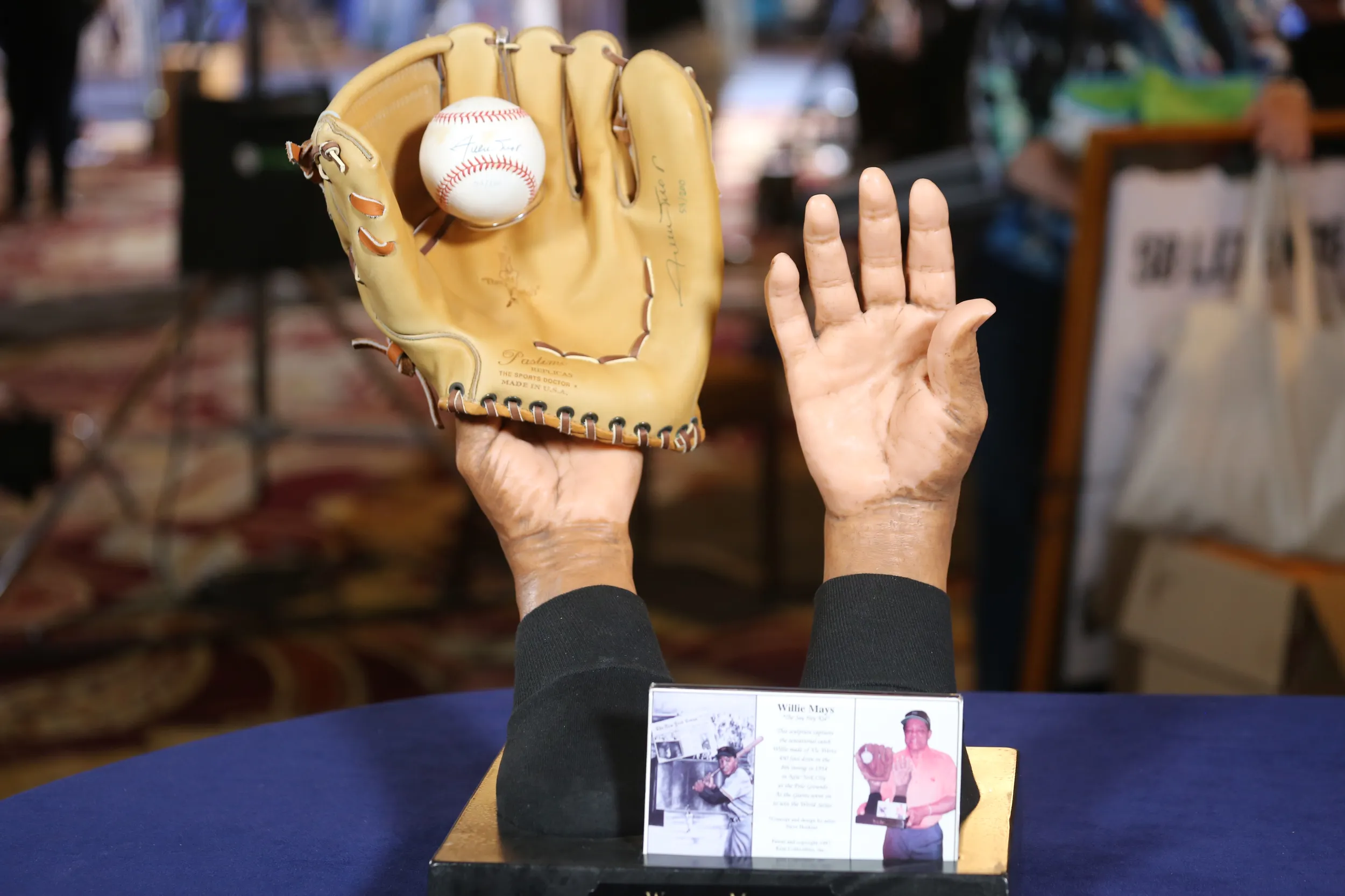
appraisal
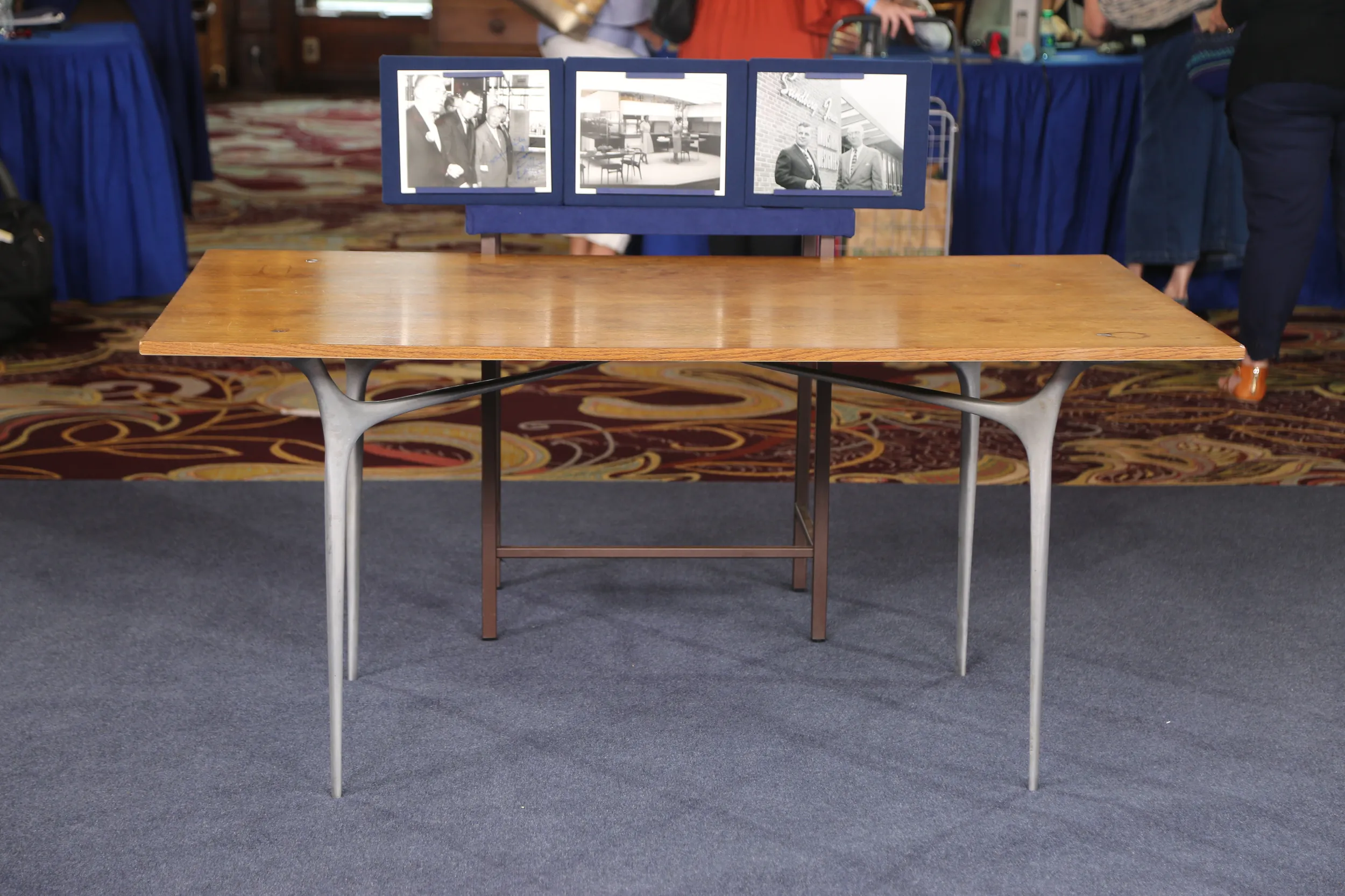
appraisal
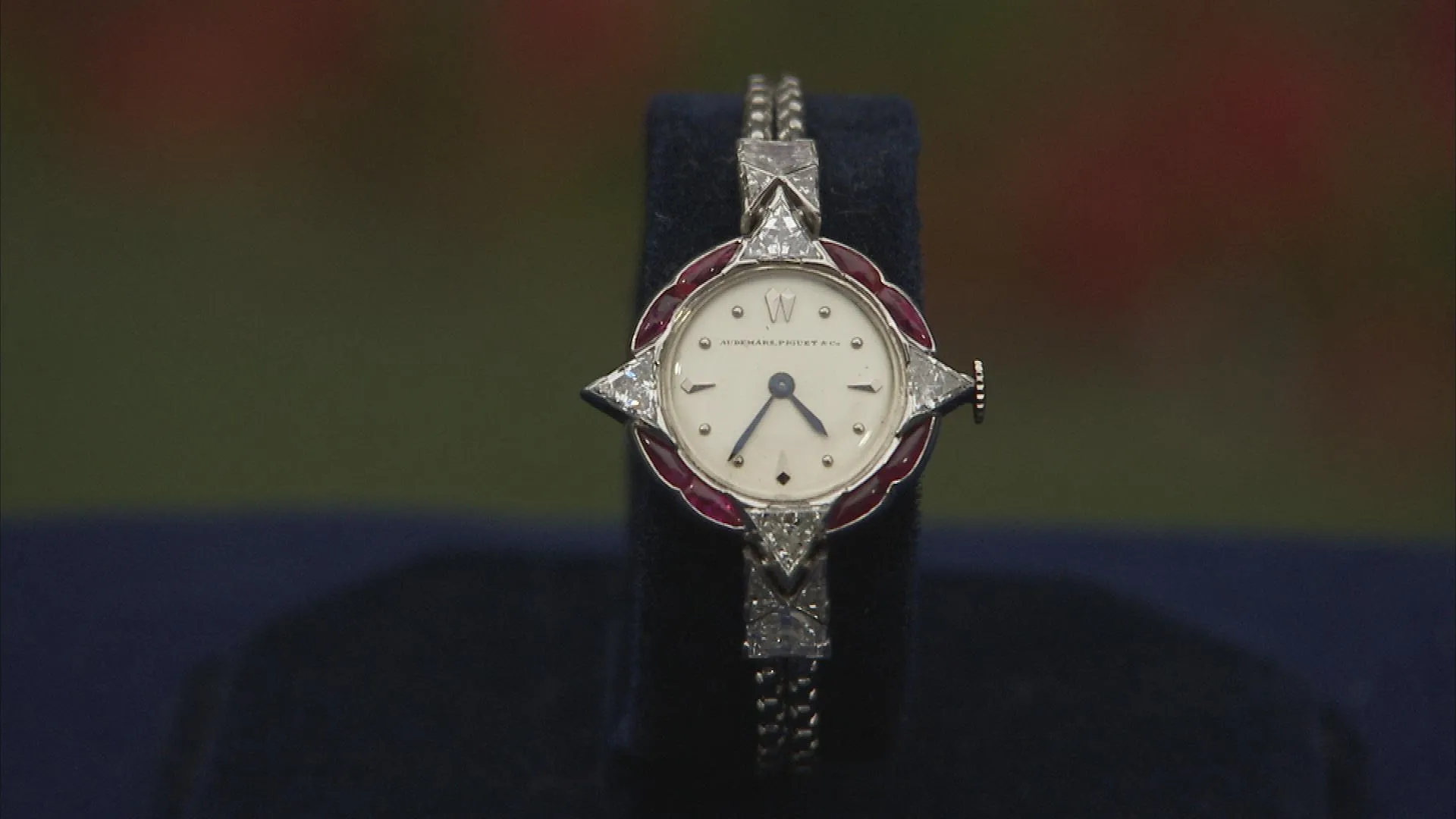
appraisal
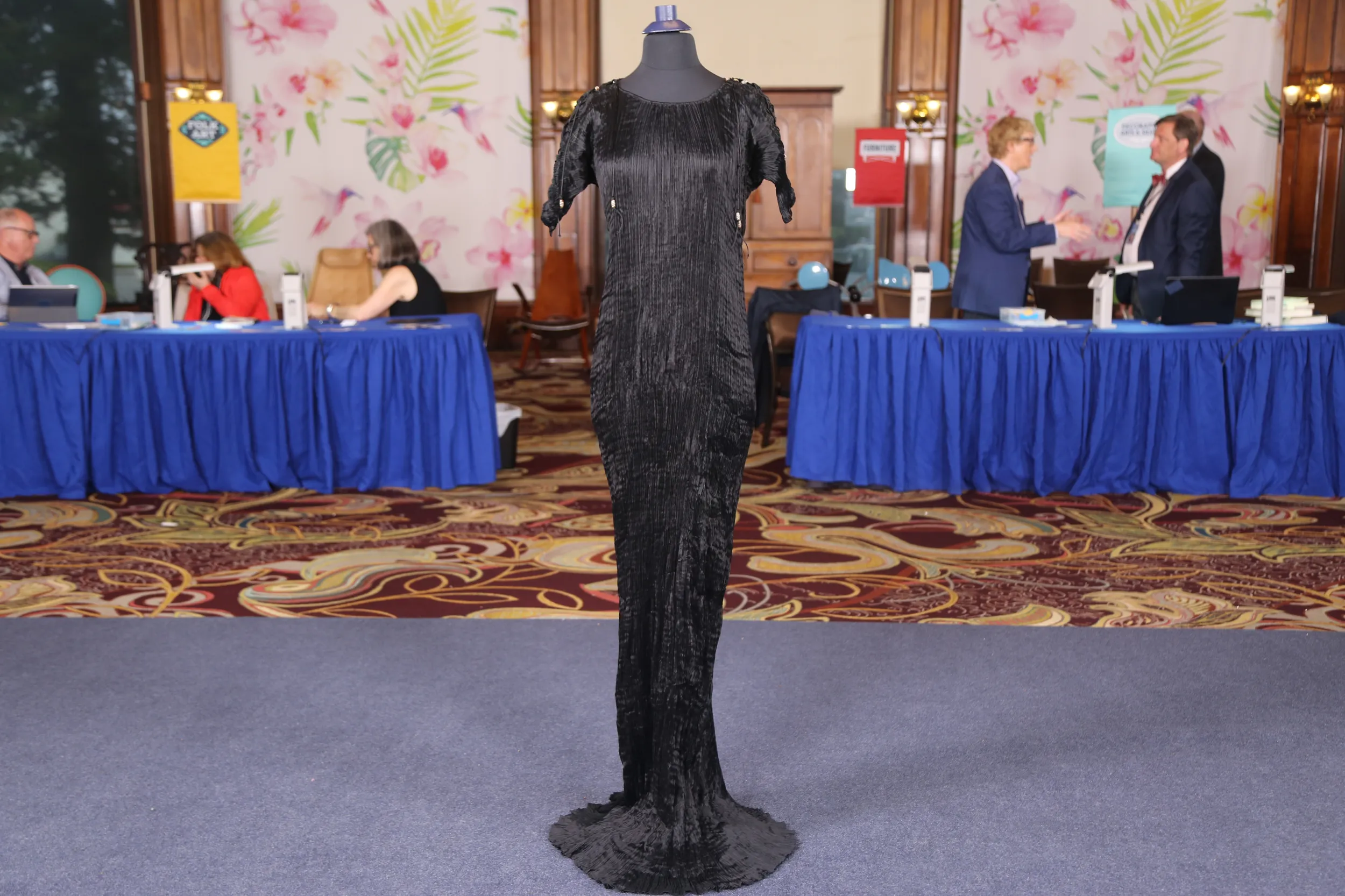
appraisal

appraisal
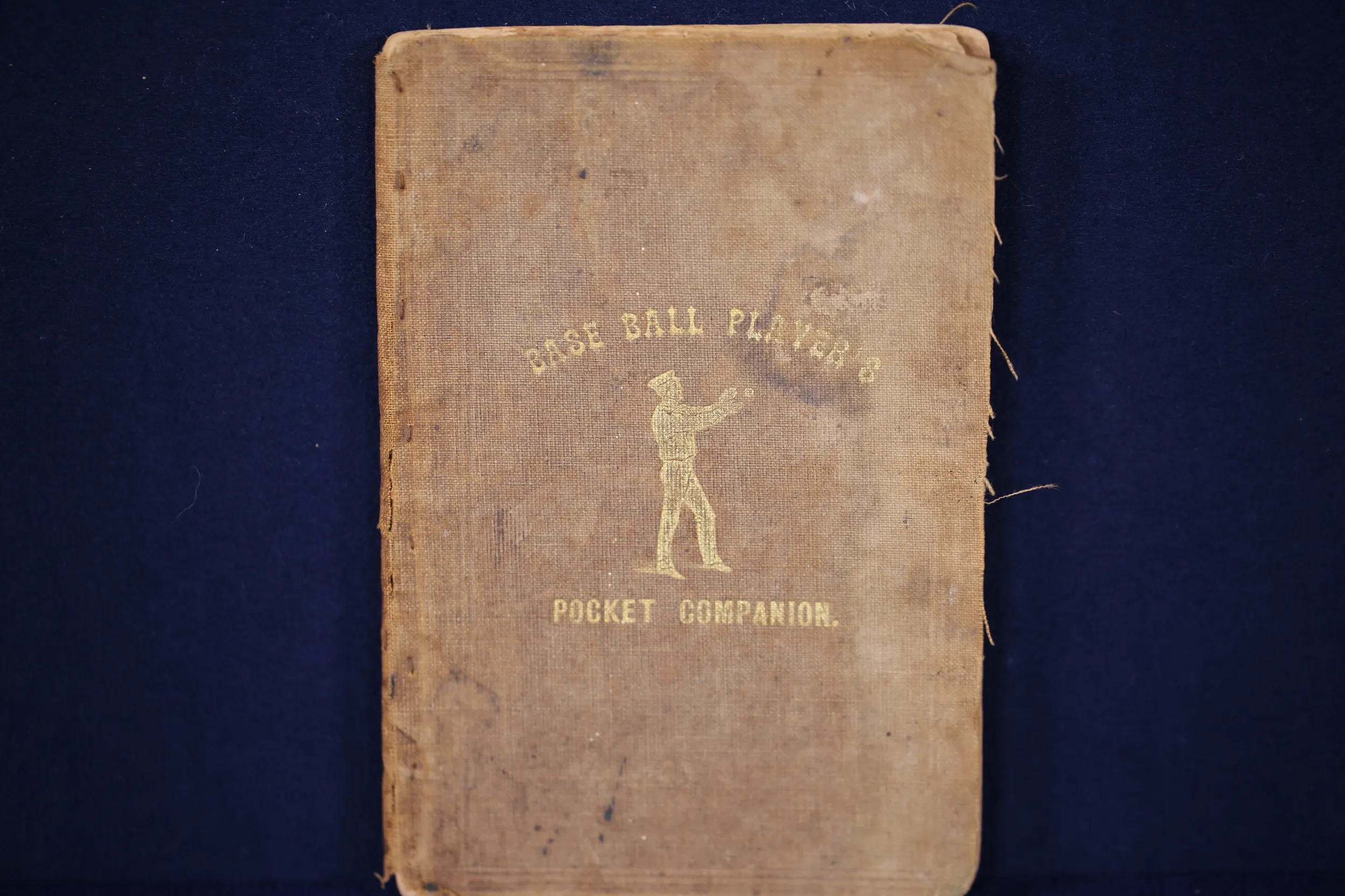
appraisal
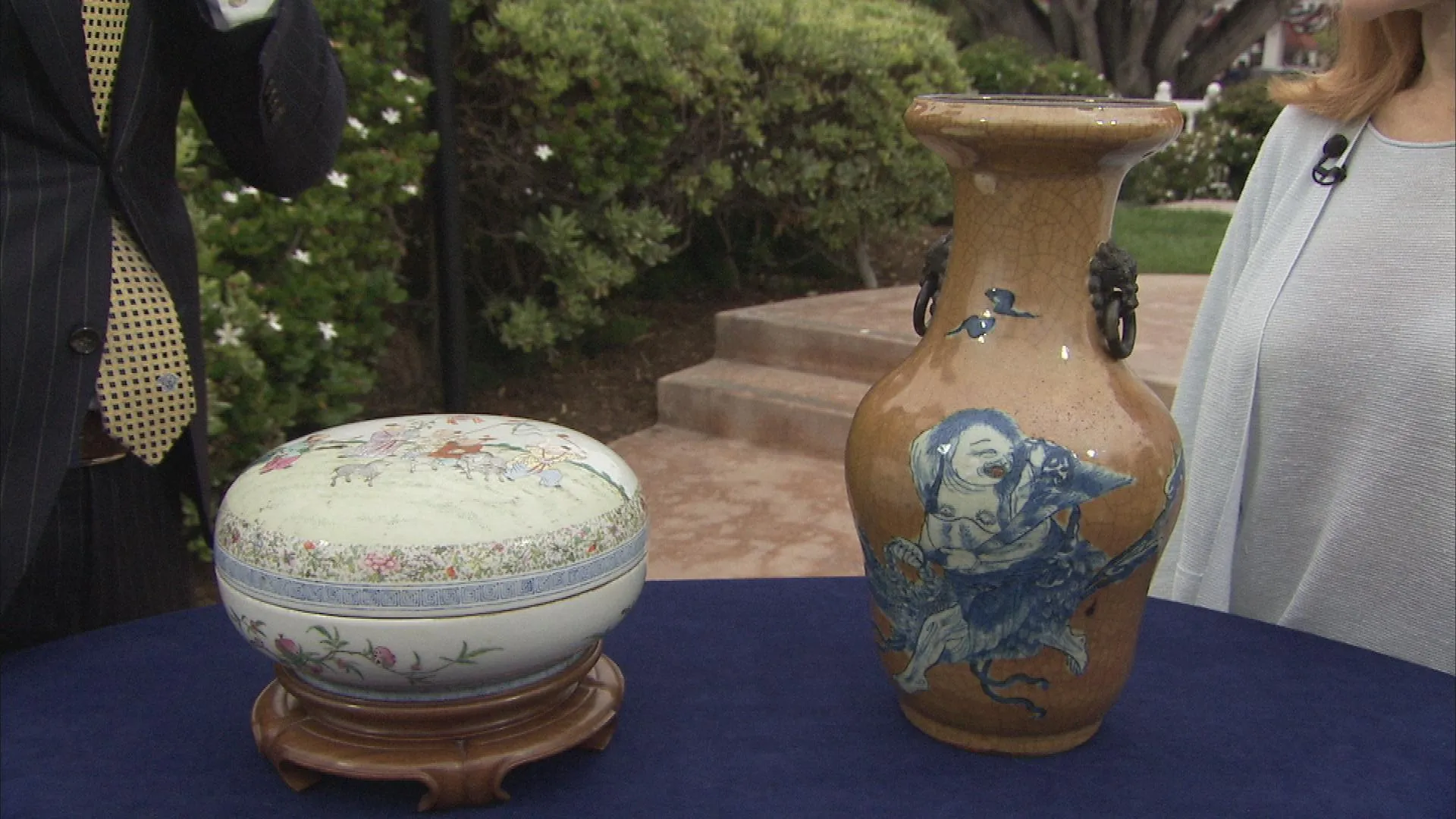
appraisal
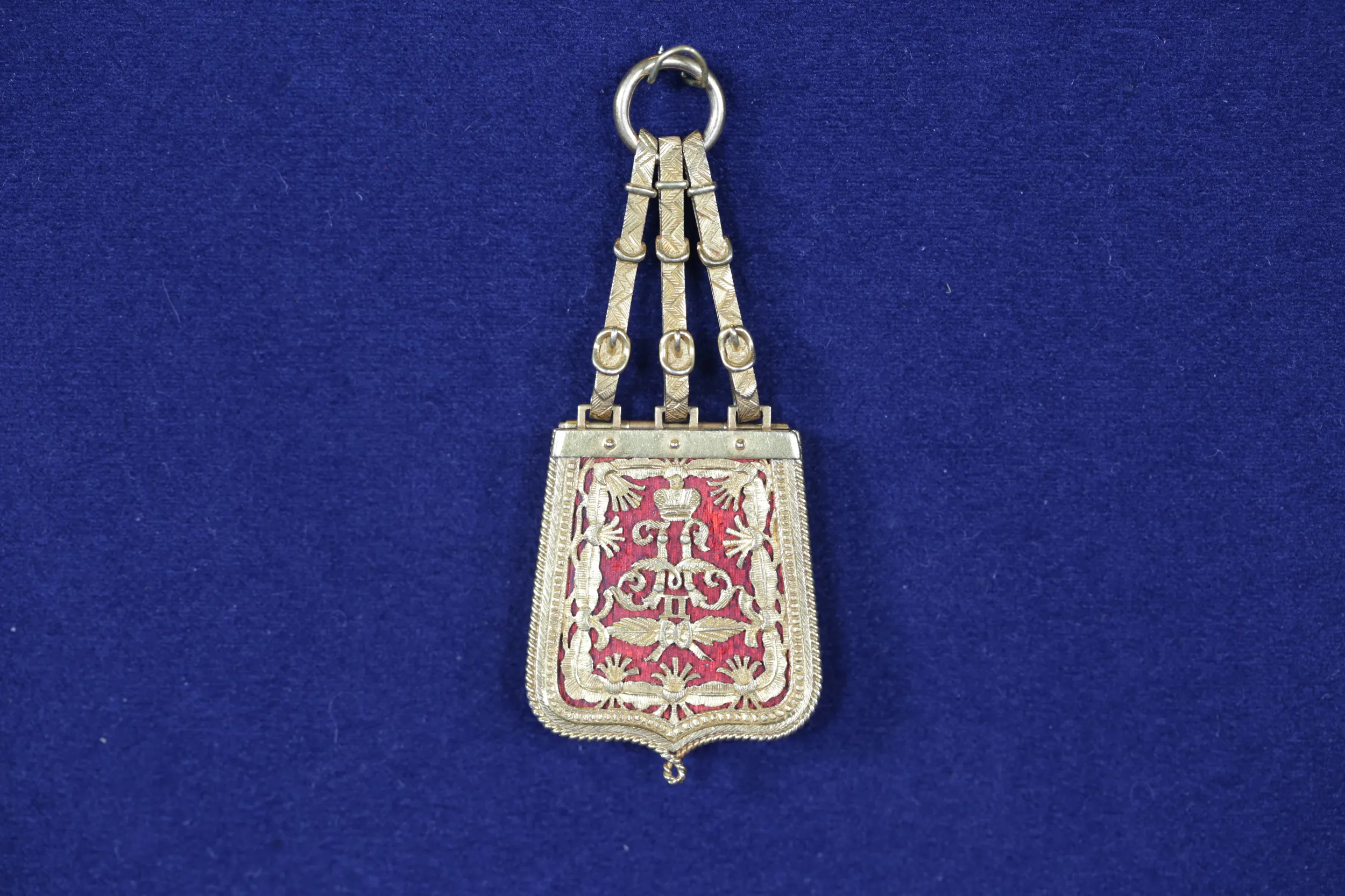
appraisal
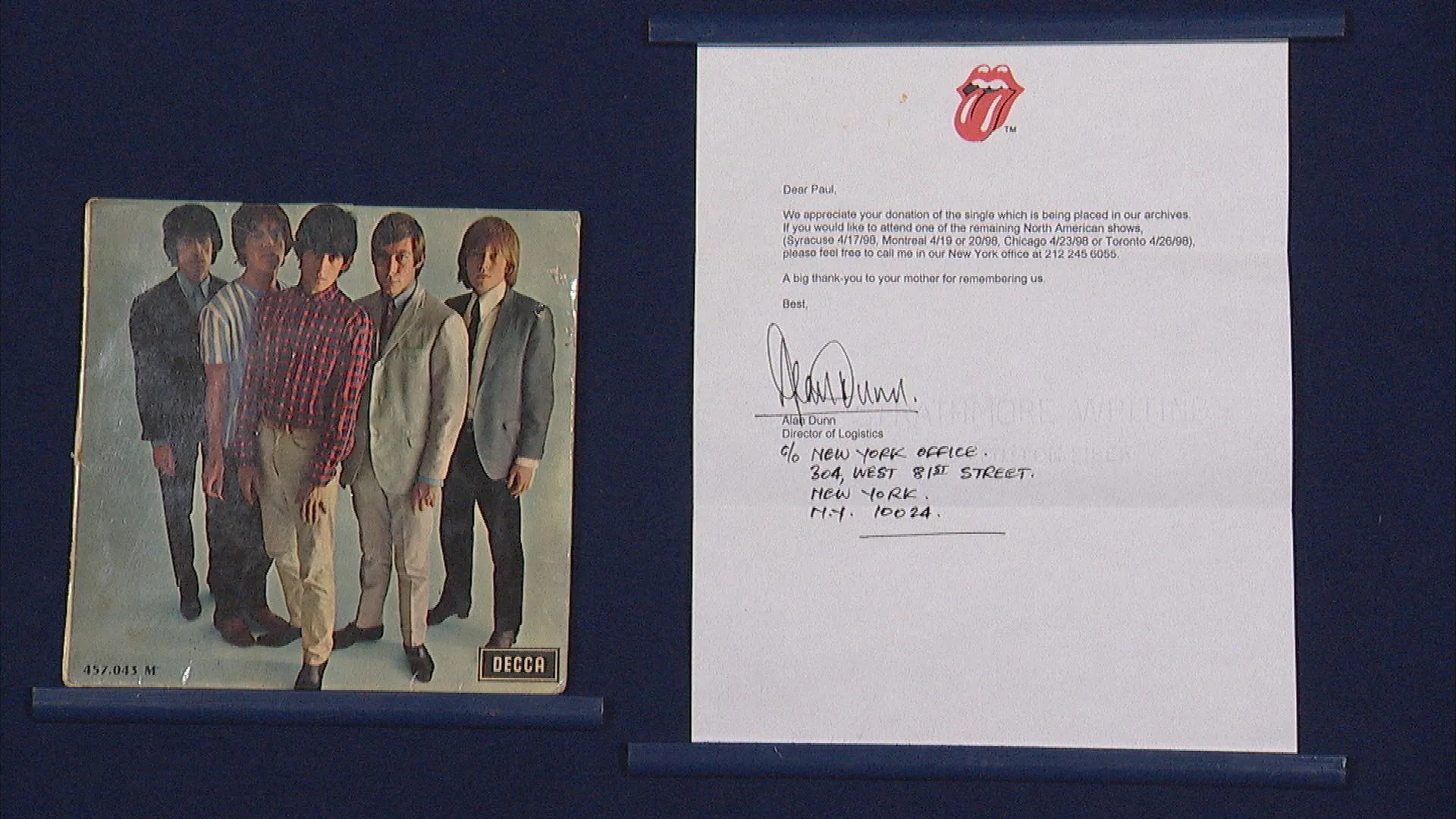
appraisal
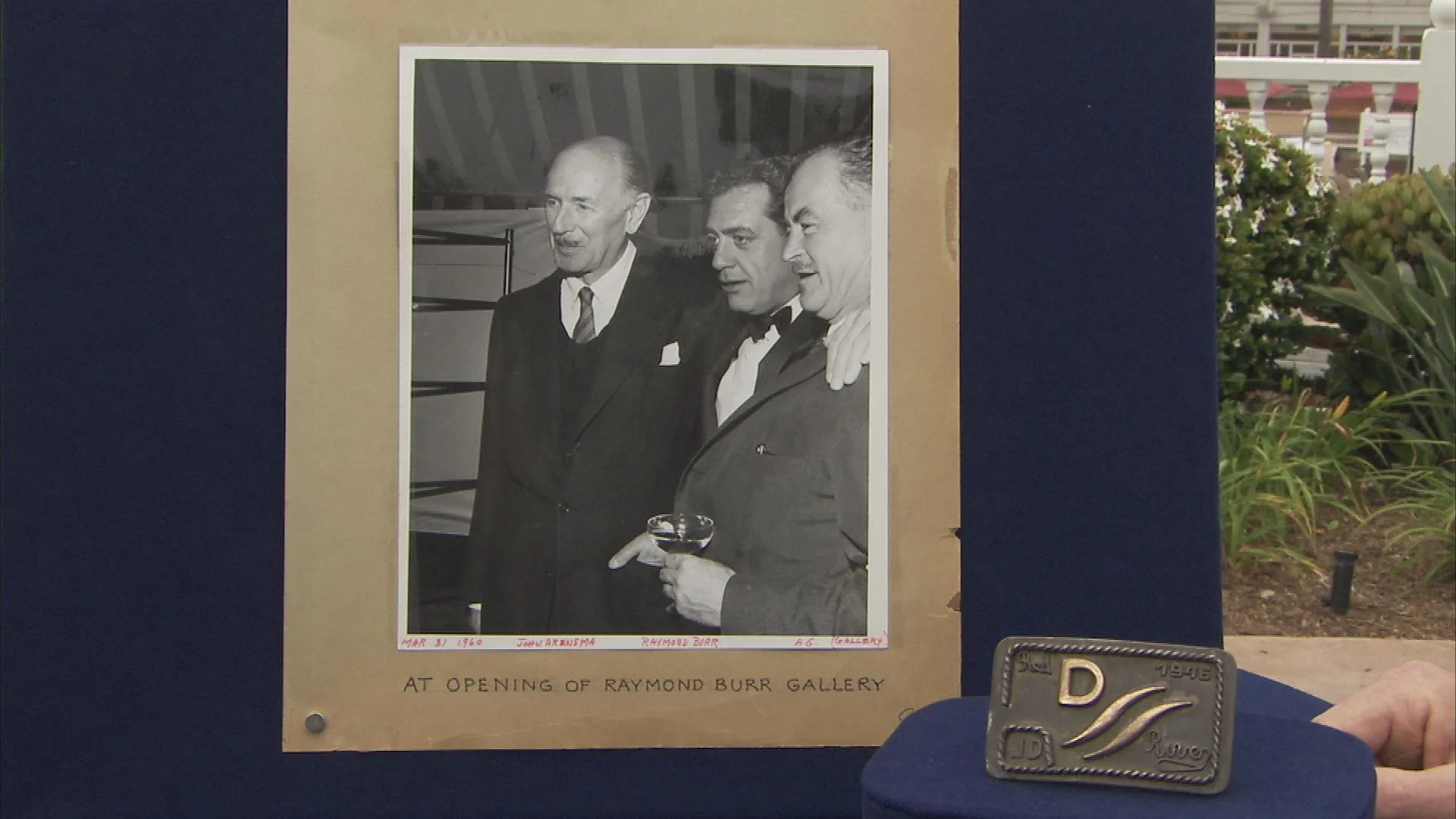
appraisal
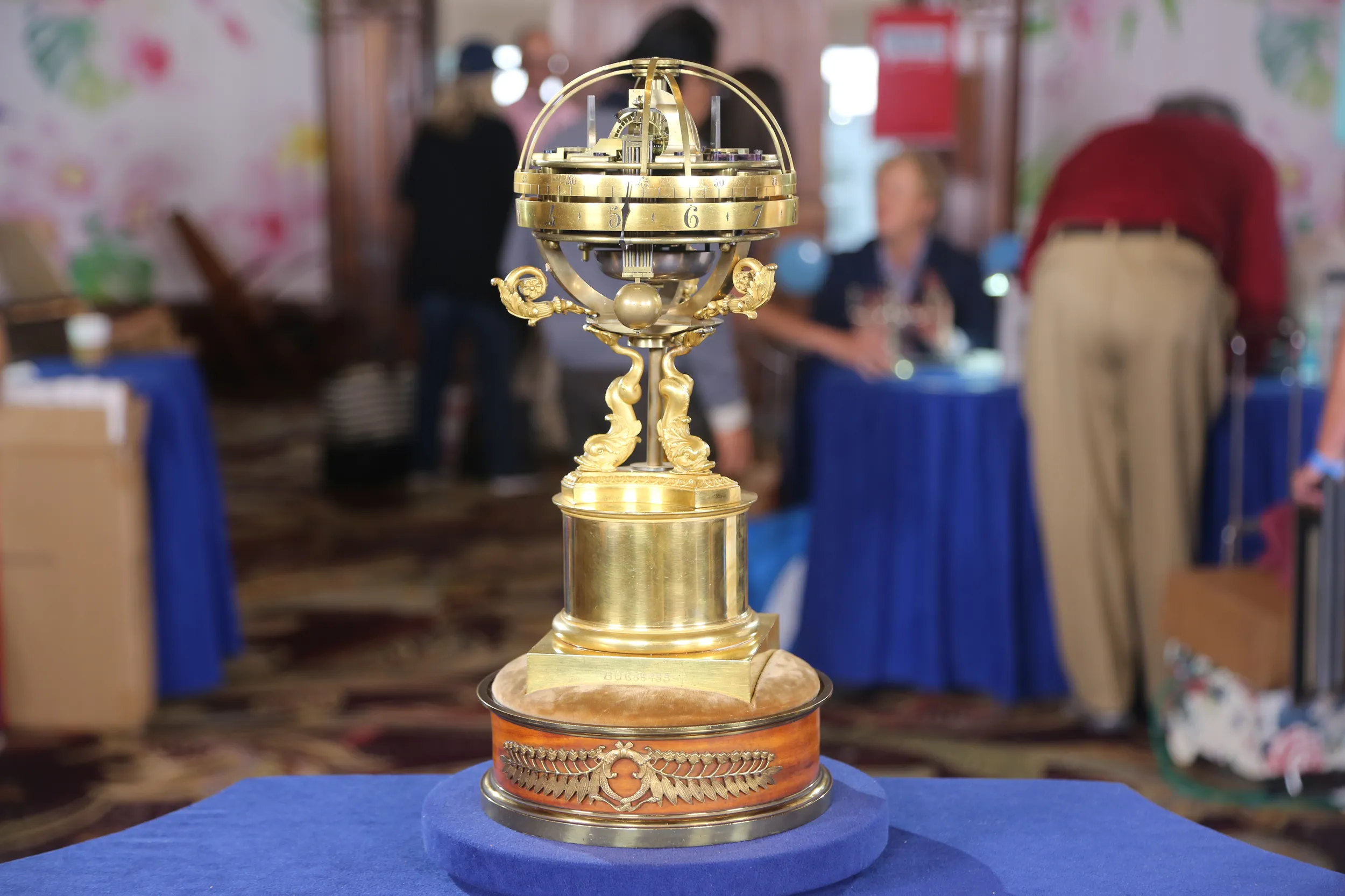
appraisal
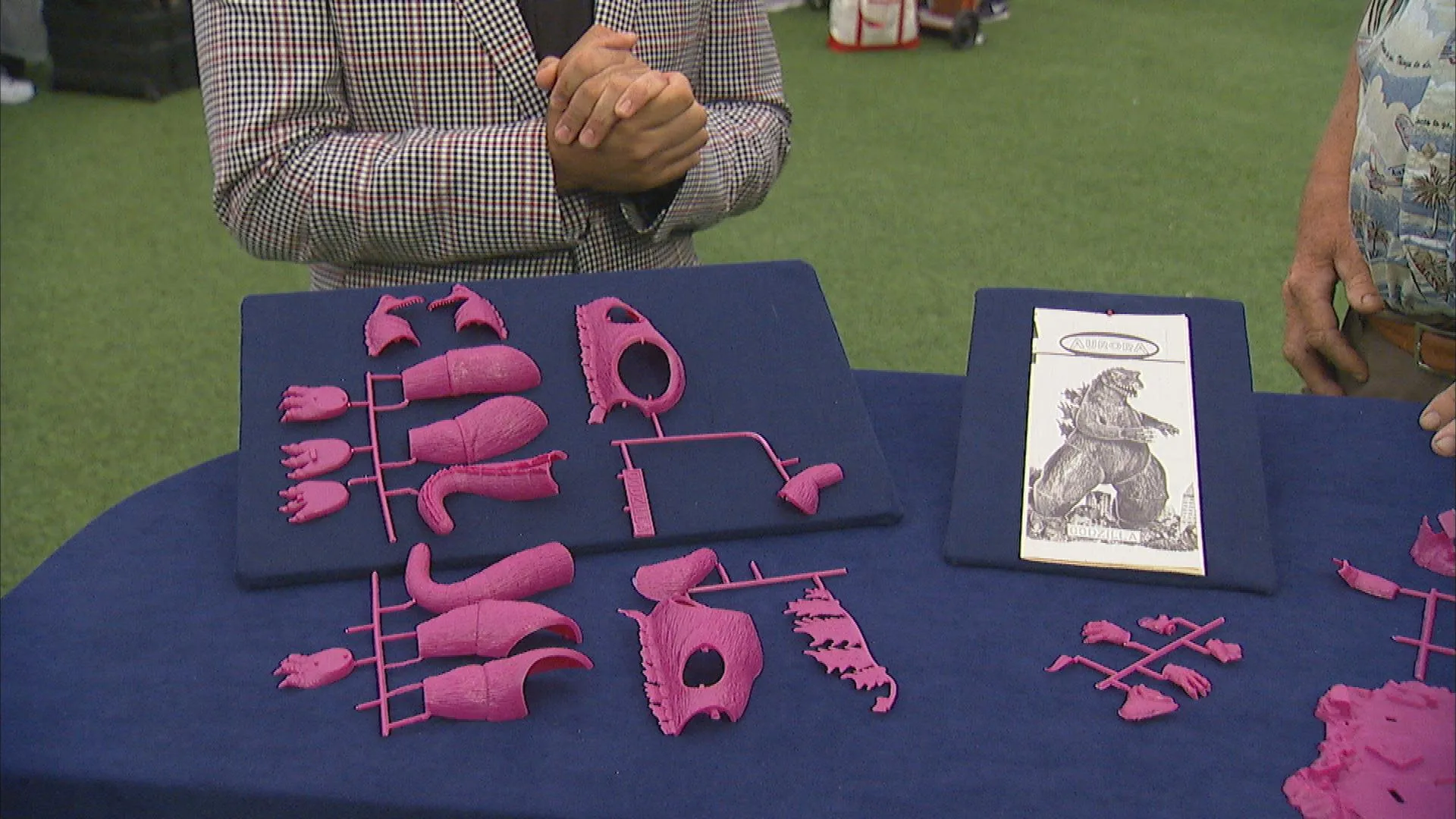
appraisal
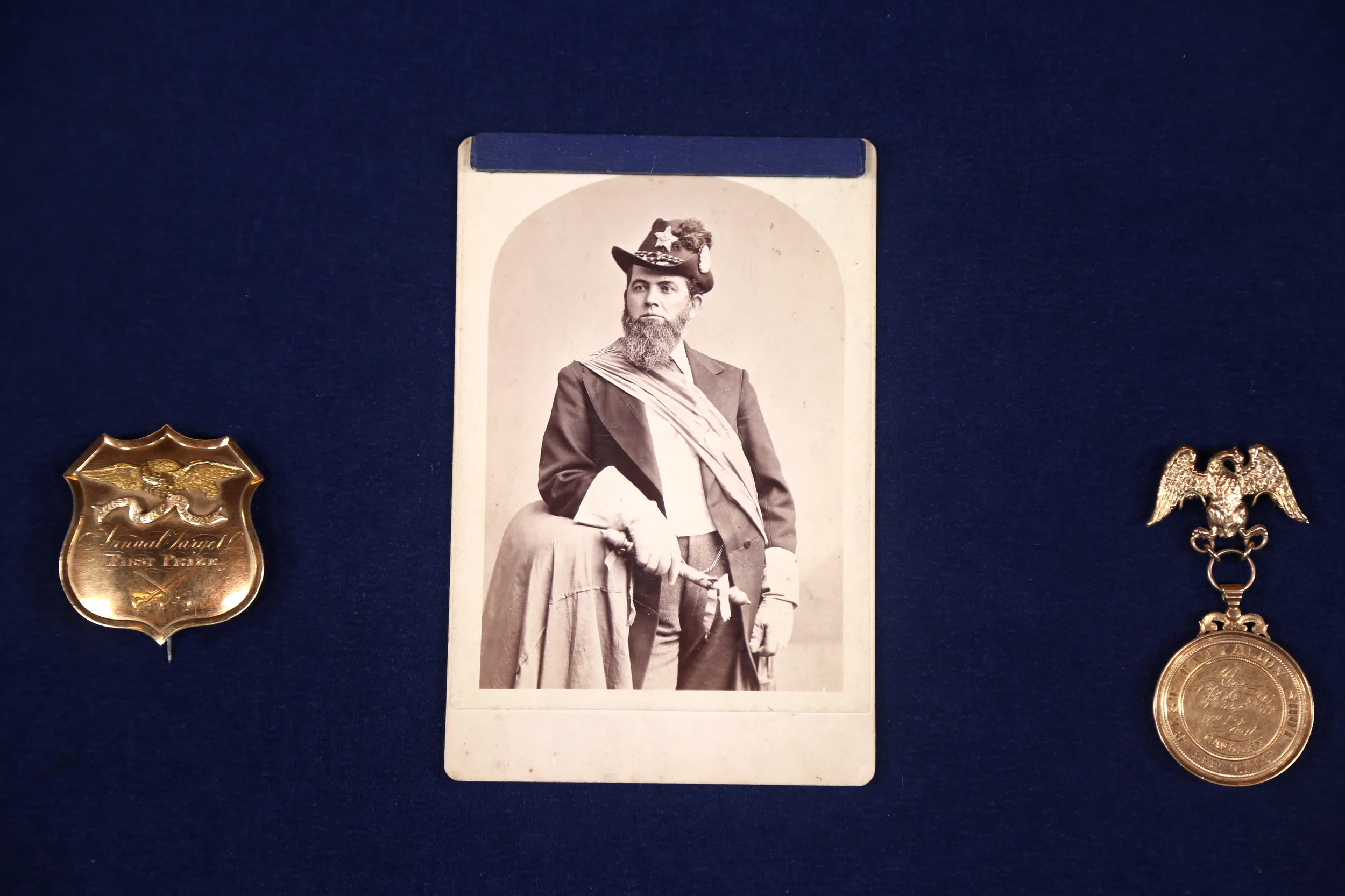
appraisal
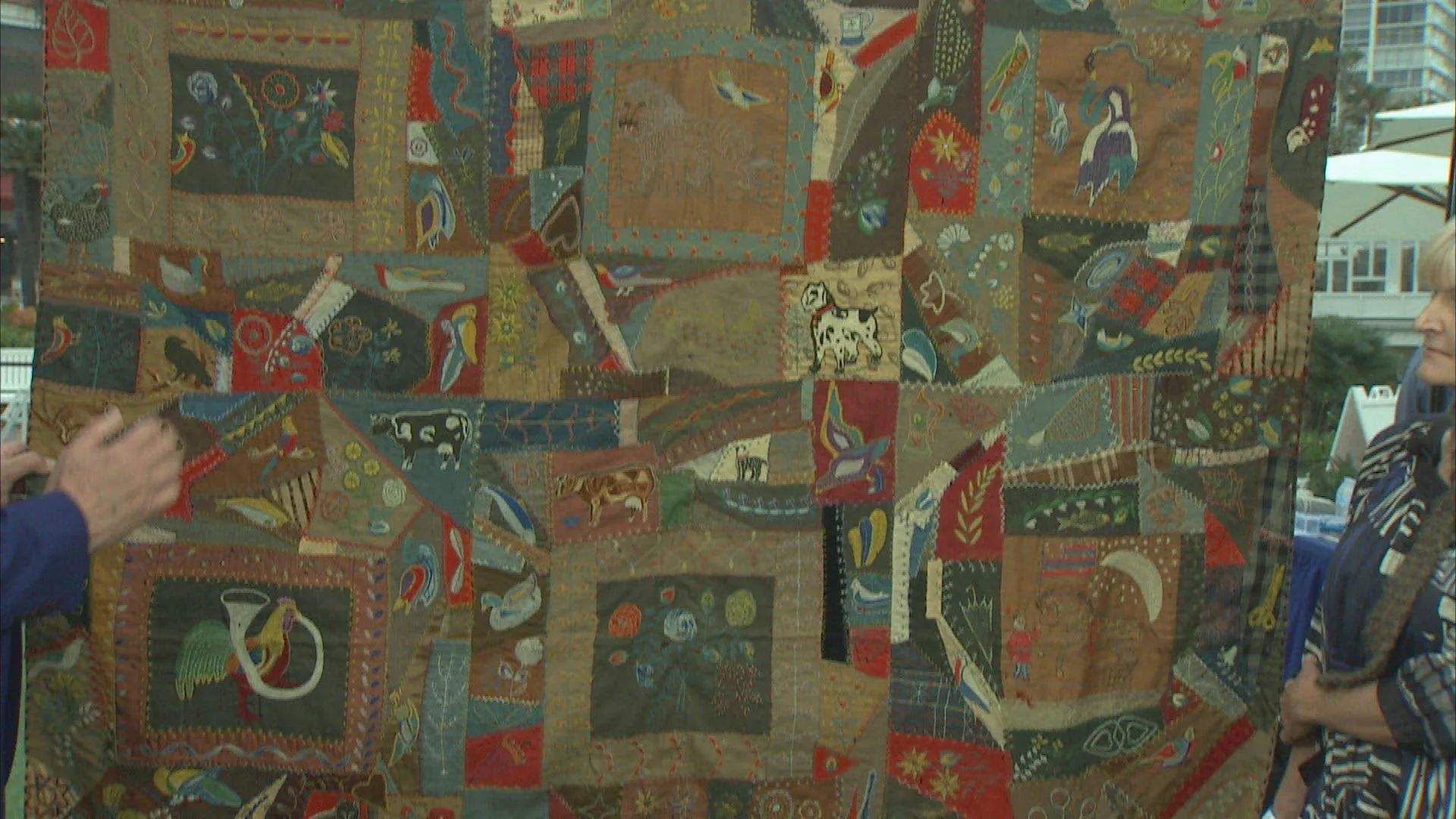
appraisal
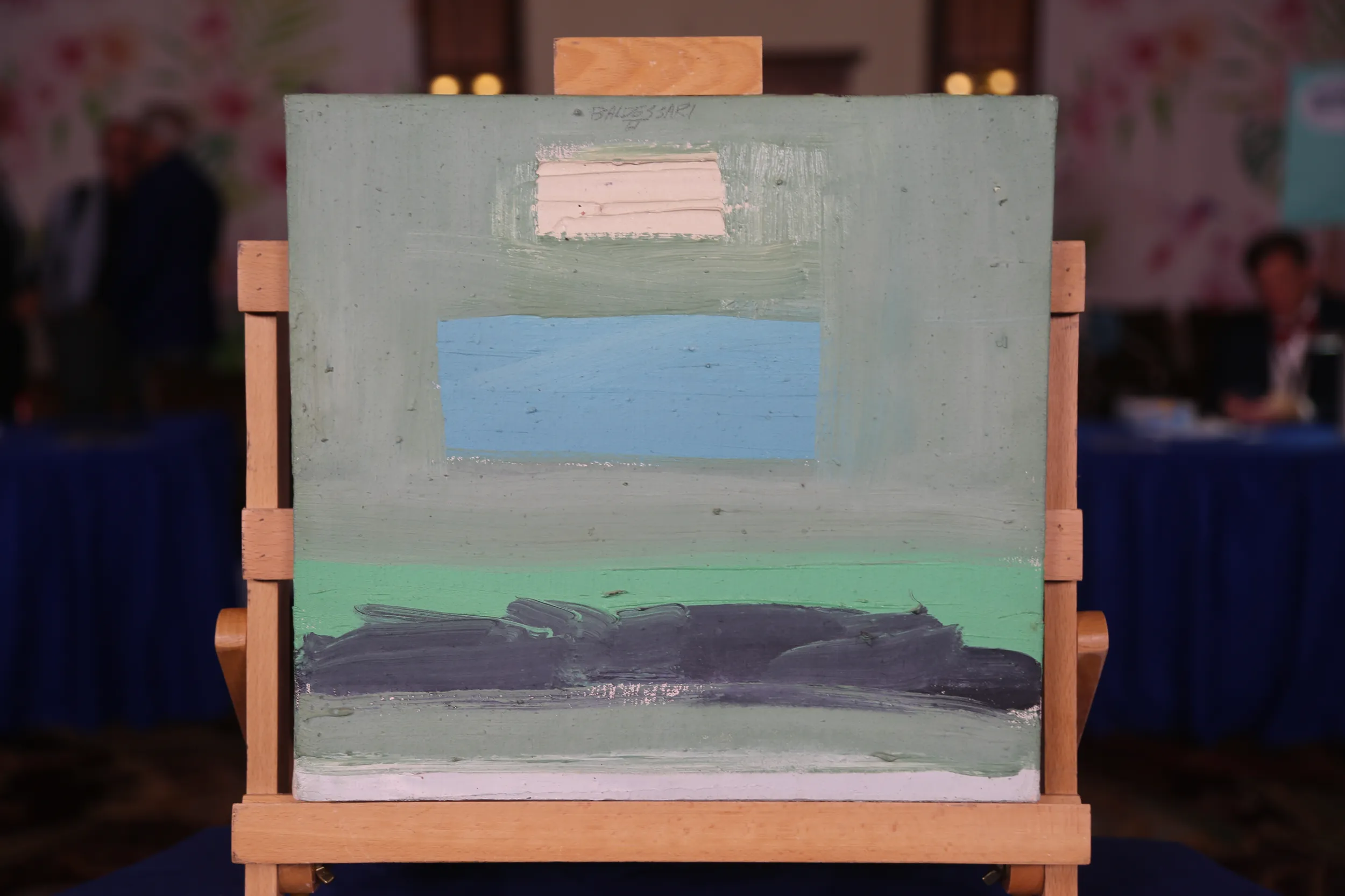
appraisal









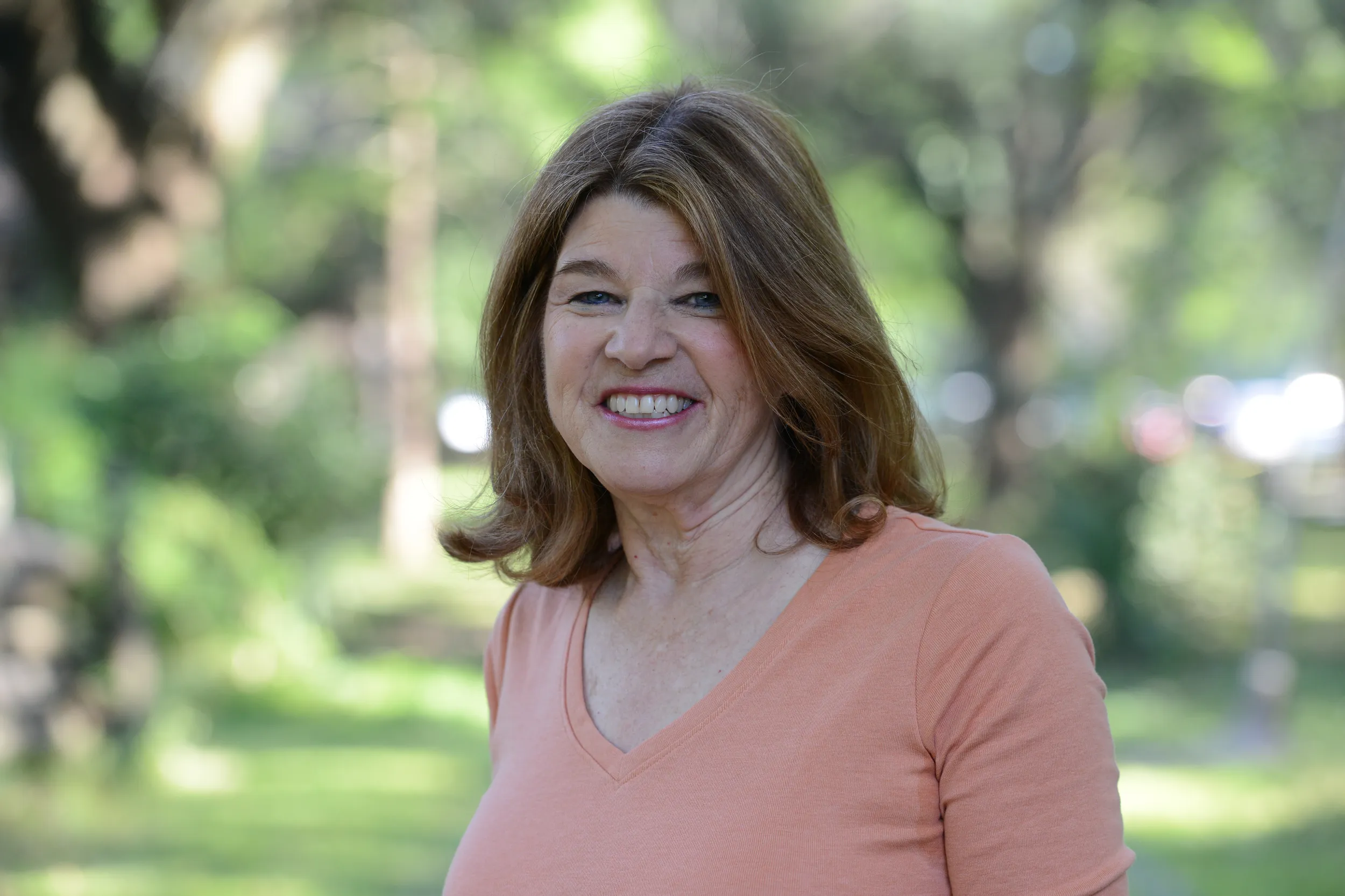
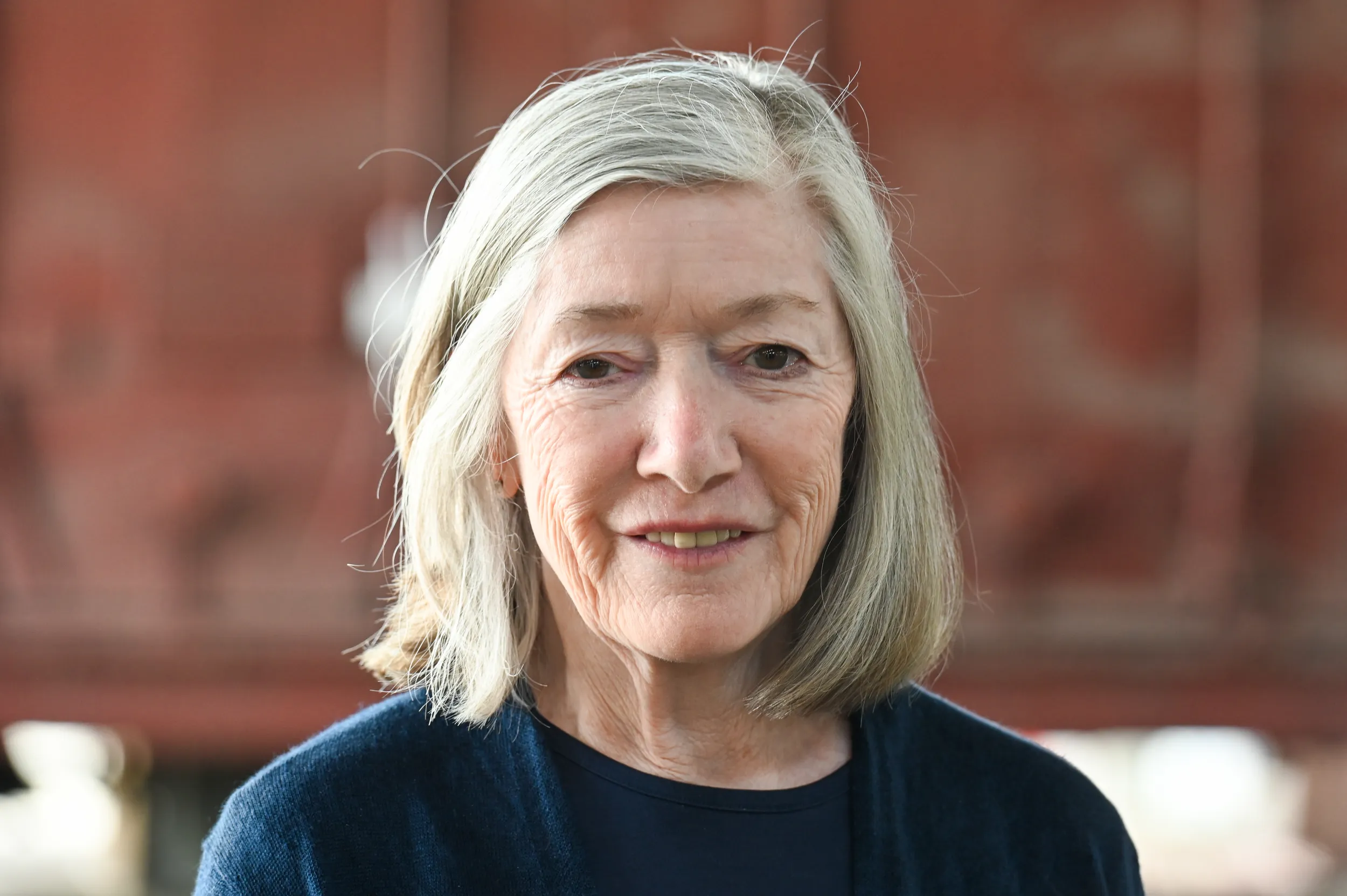

Baseball fans — take an up-close look at this important early baseball rulebook.
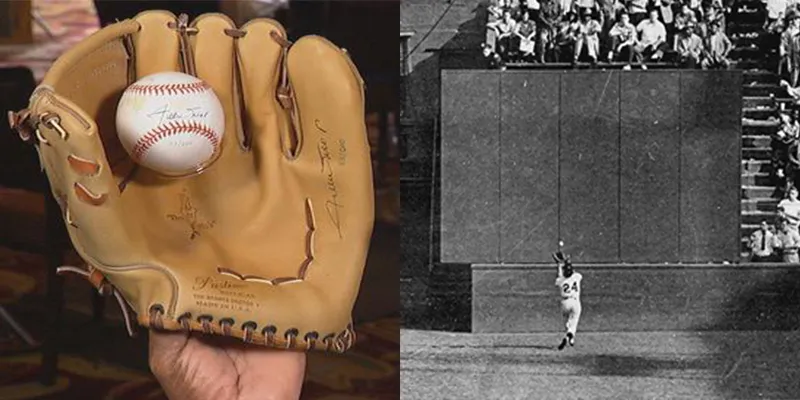
Relive what has been called "The Greatest Play Ever Made" by Giants center fielder Willie Mays during Game 1 of the 1954 World Series at the Polo Grounds in New York.
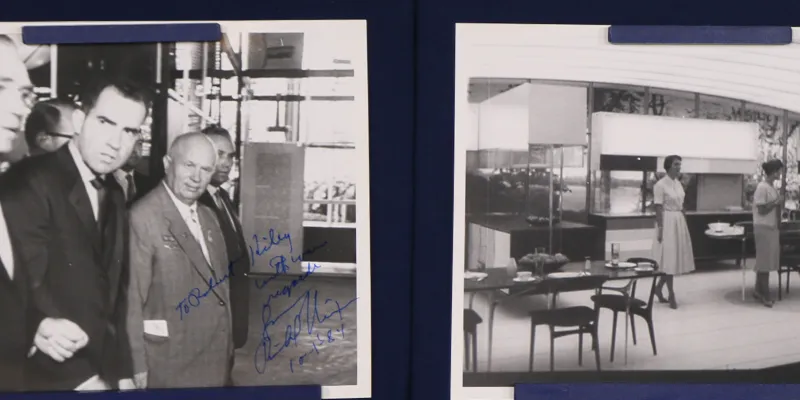
Watch the tense dynamic between Nixon and Khrushchev unfold in a mid-century model American kitchen in Moscow.
A weekly collection of previews, videos, articles, interviews, and more!
Funding for ANTIQUES ROADSHOW is provided by Ancestry and American Cruise Lines. Additional funding is provided by public television viewers.
ANTIQUES ROADSHOW is a trademark of the BBC and is produced for PBS by GBH under license from BBC, Worldwide. PBS is a 501(c)(3) not-for-profit organization.
A weekly collection of previews, videos, articles, interviews, and more!
Test your appraisal knowledge in ROADSHOW's new game — Price Range!
